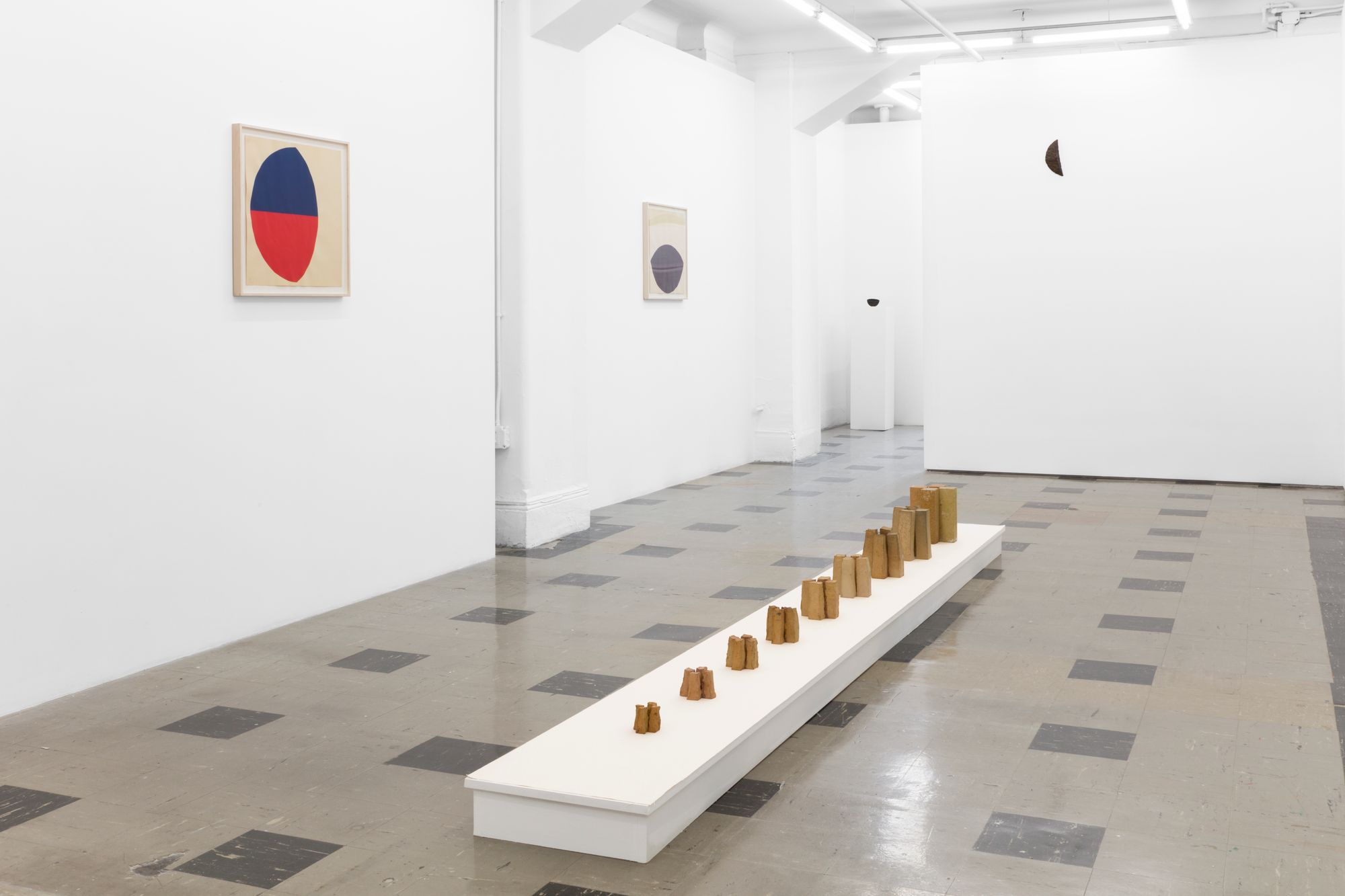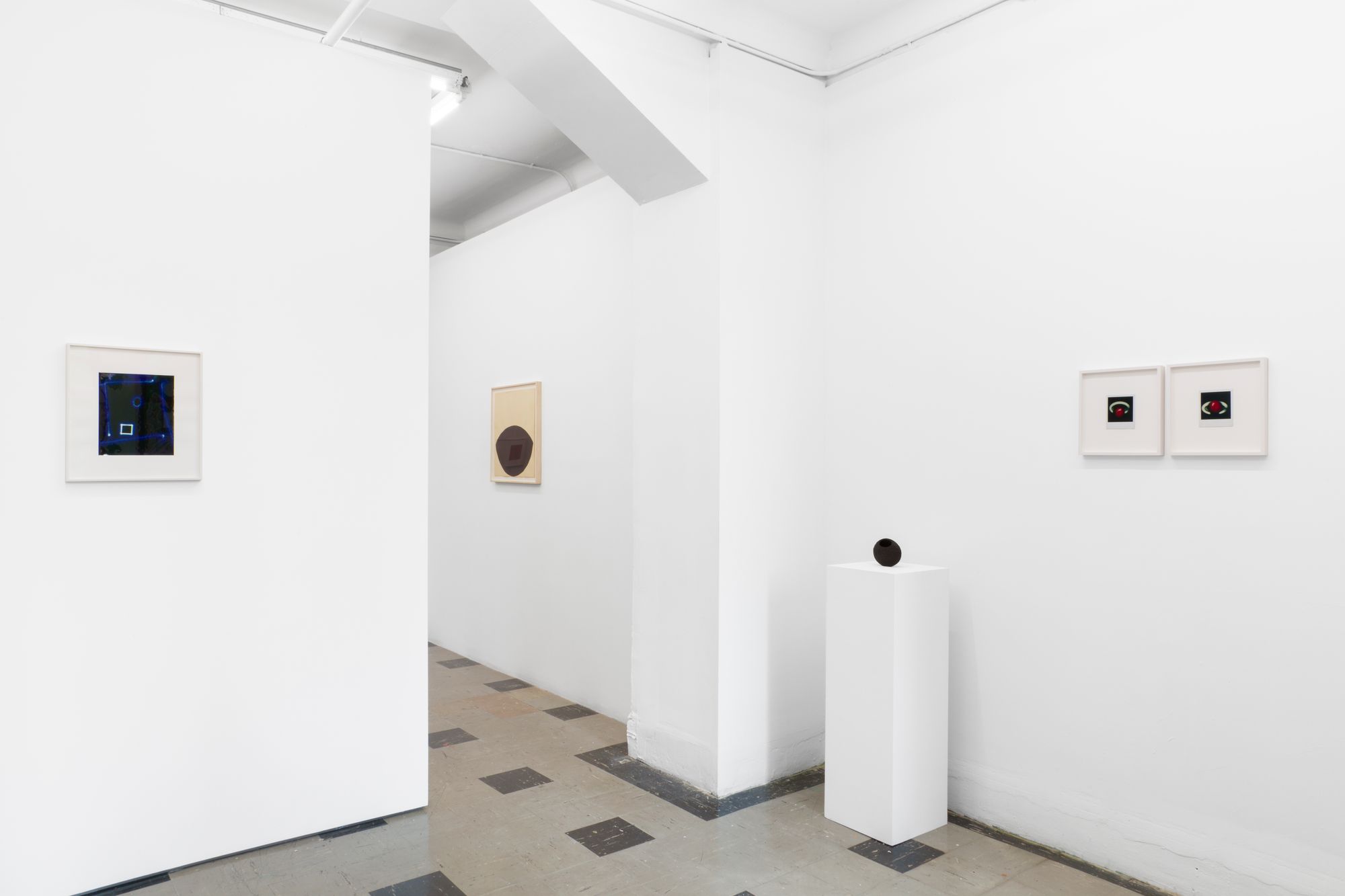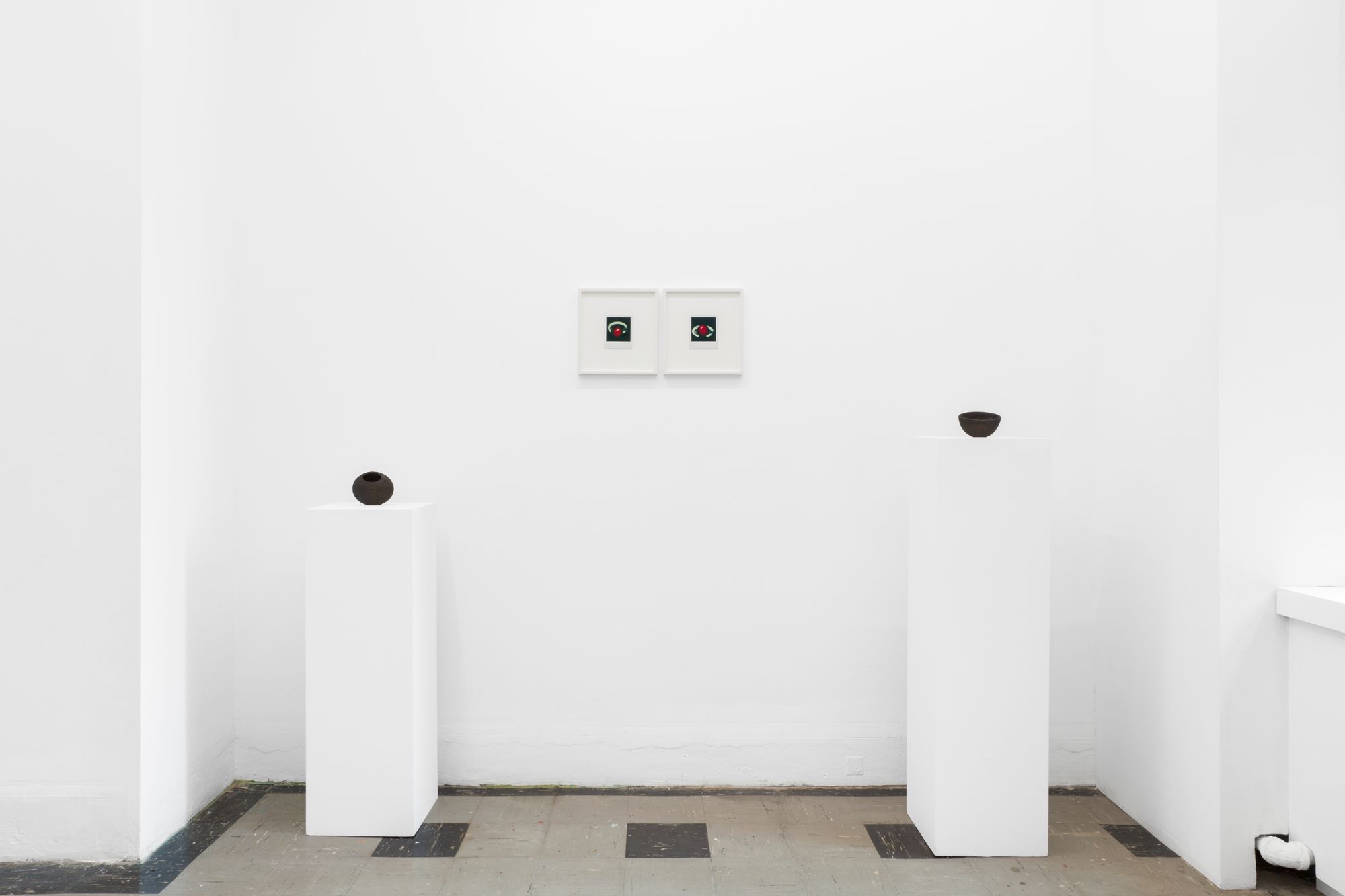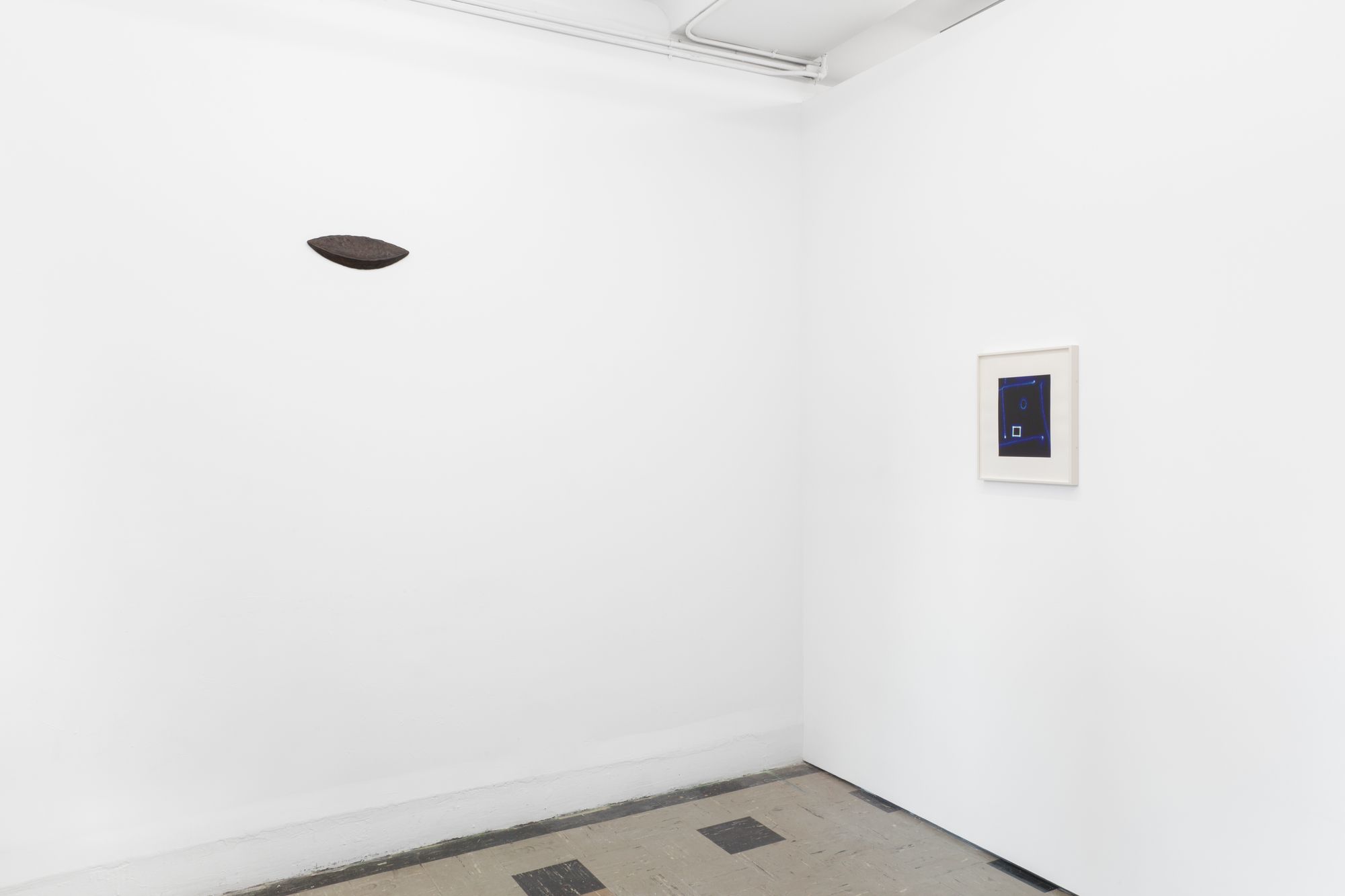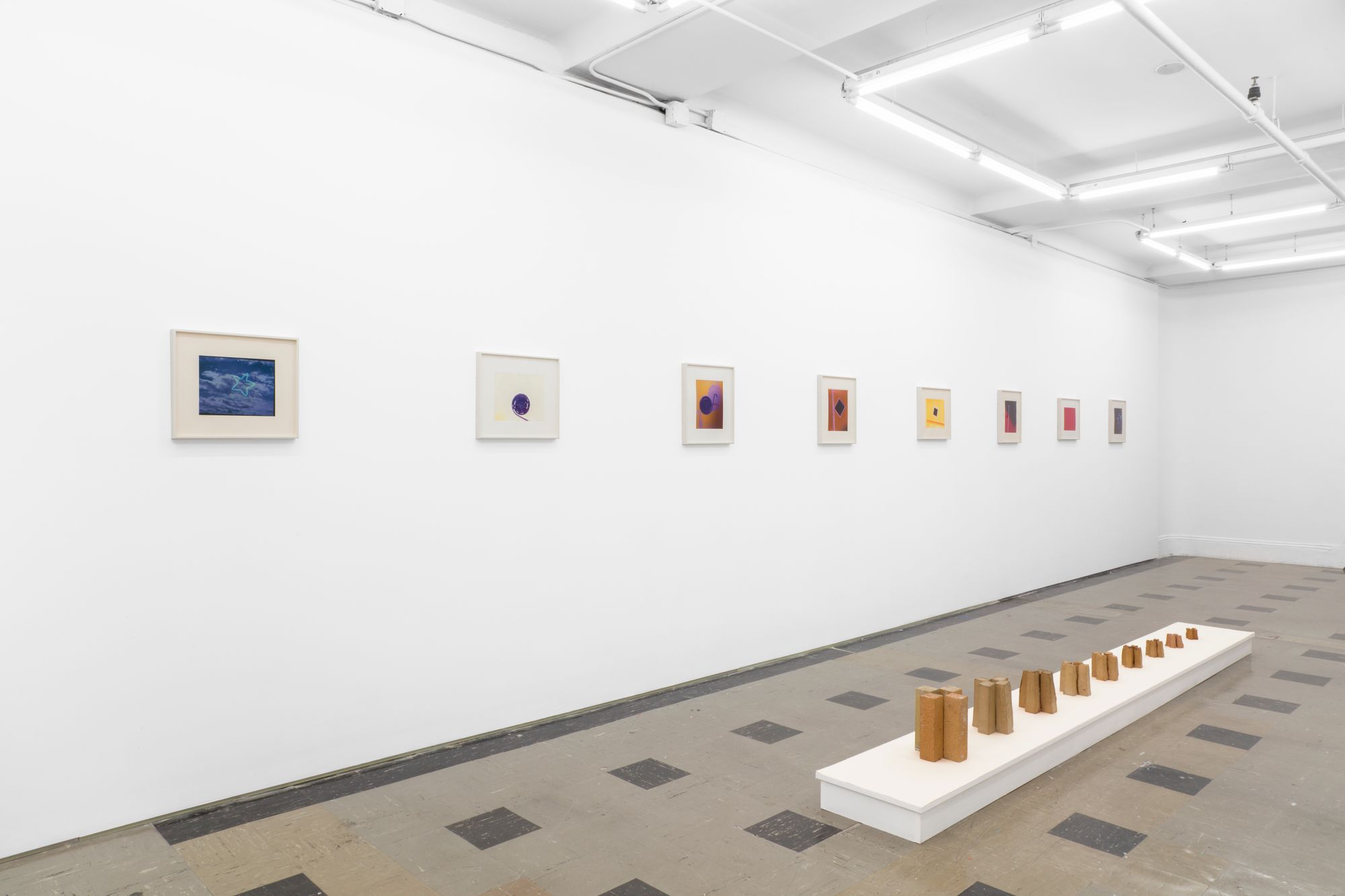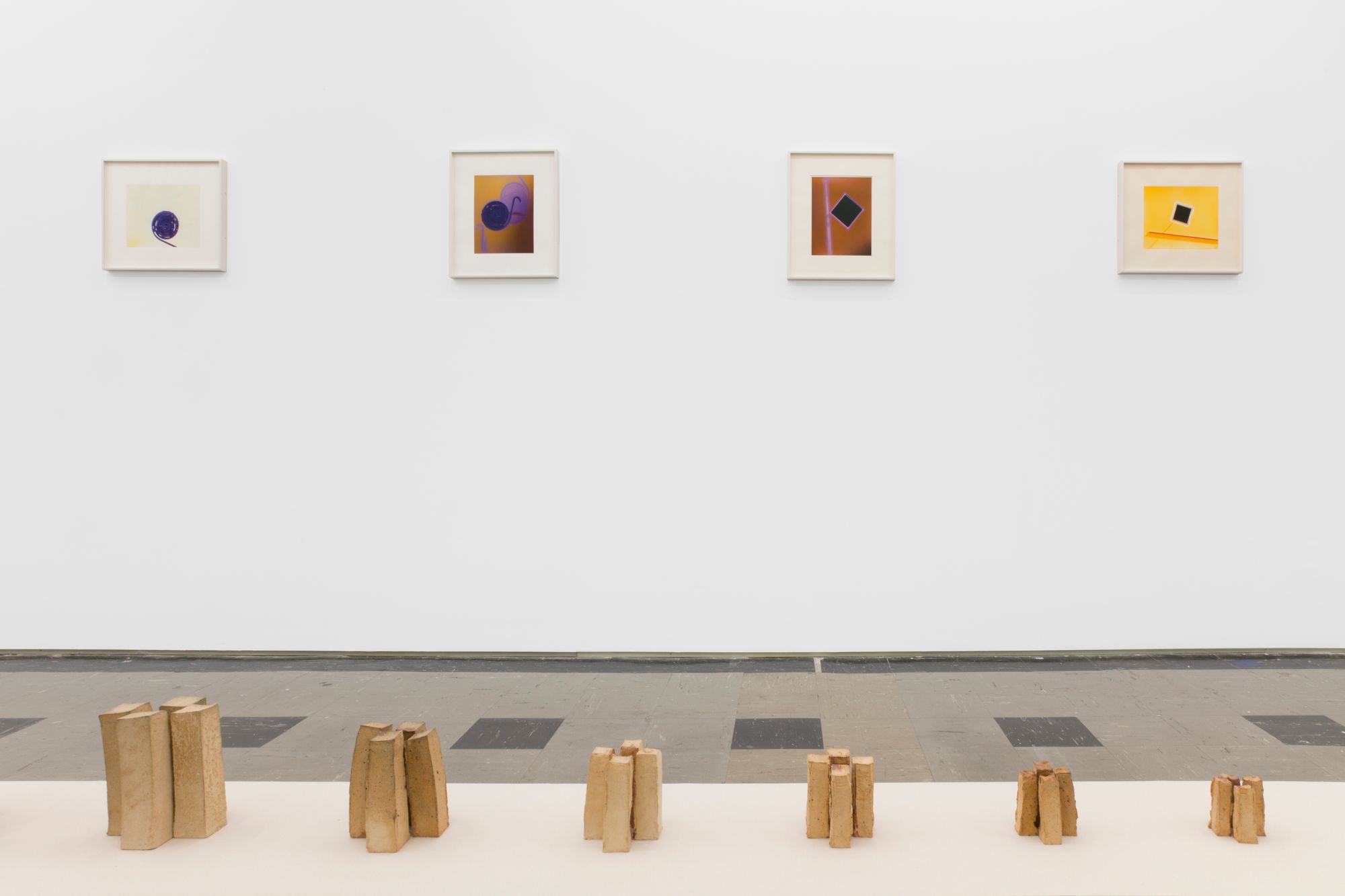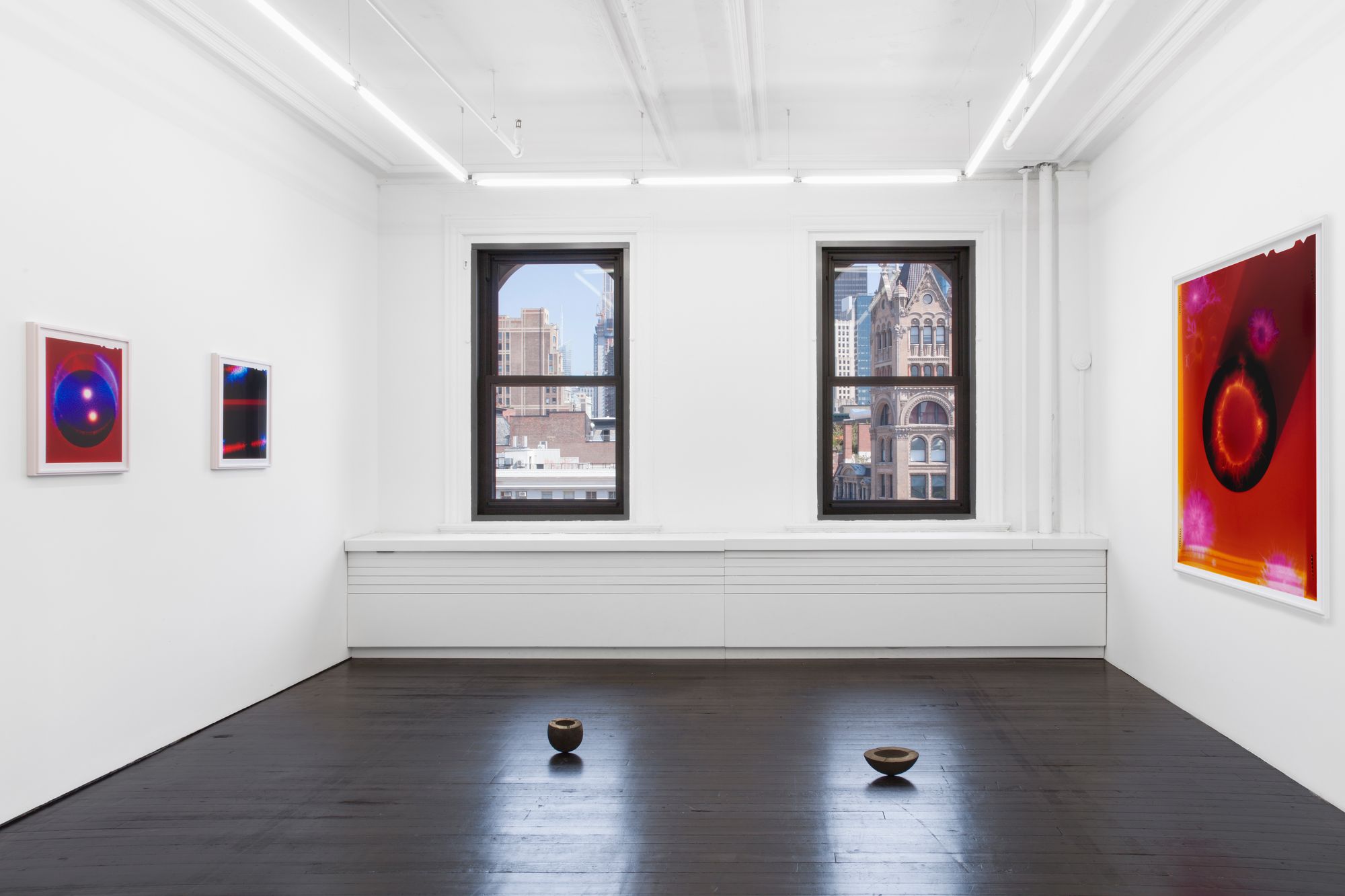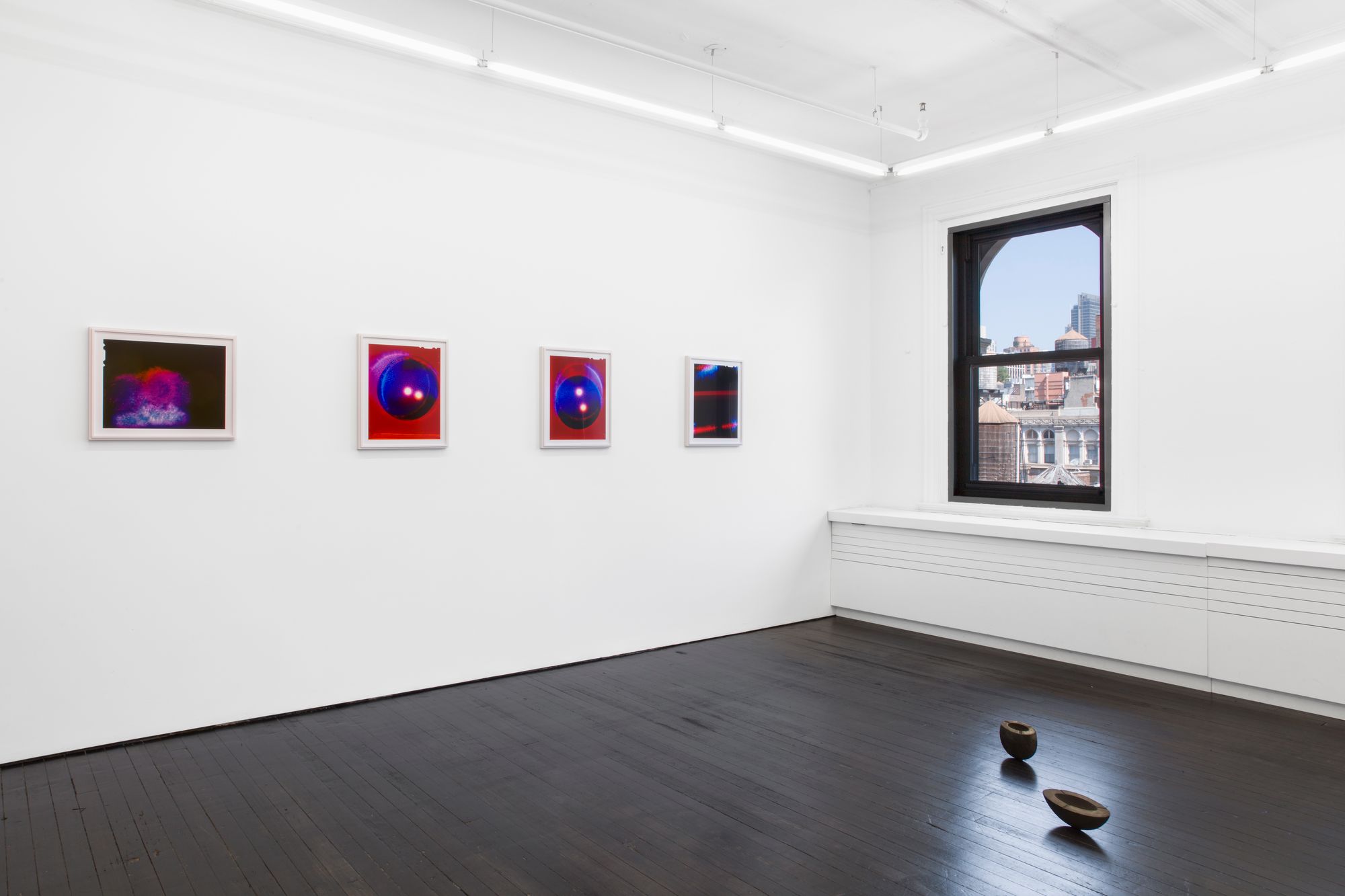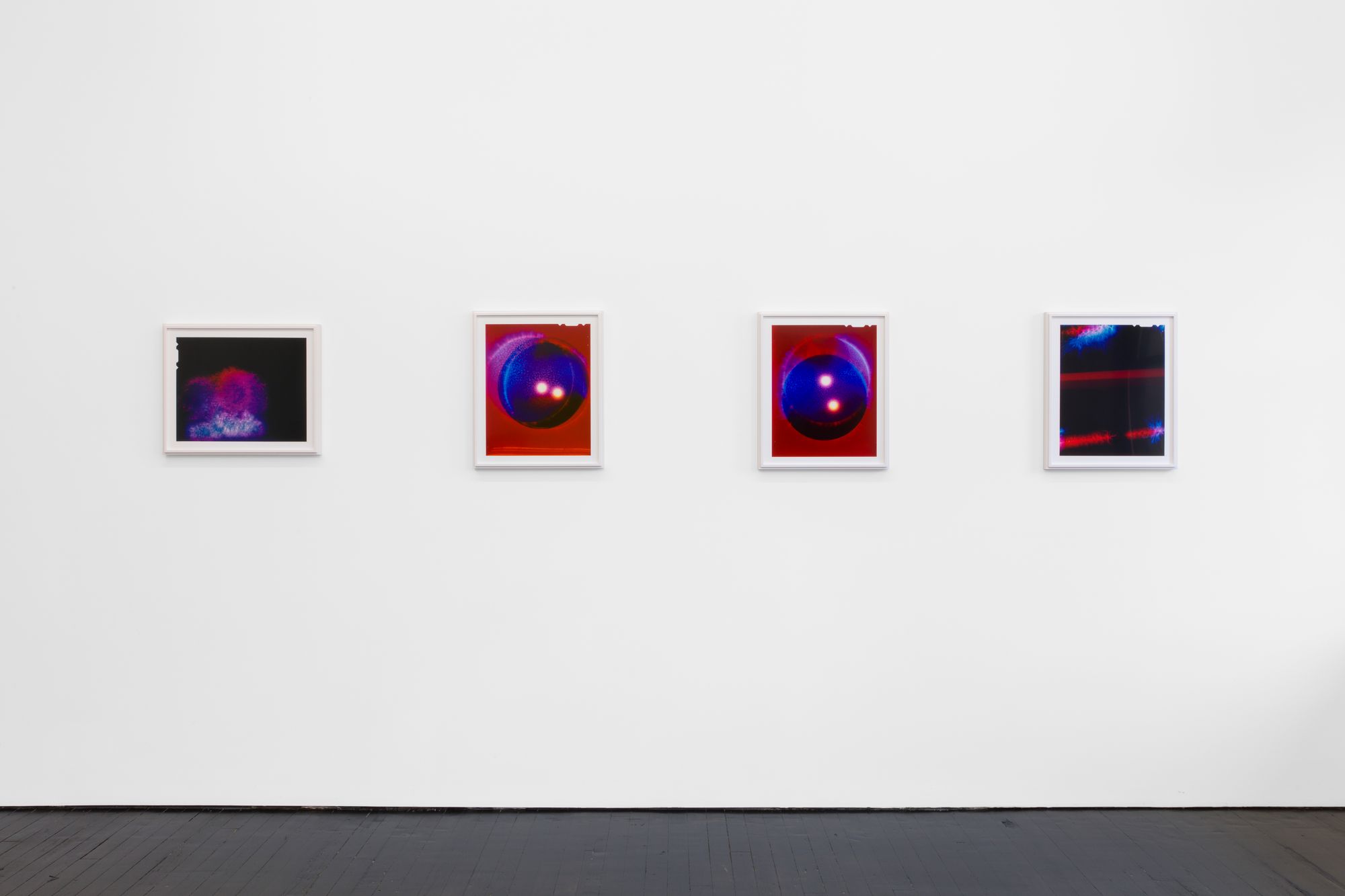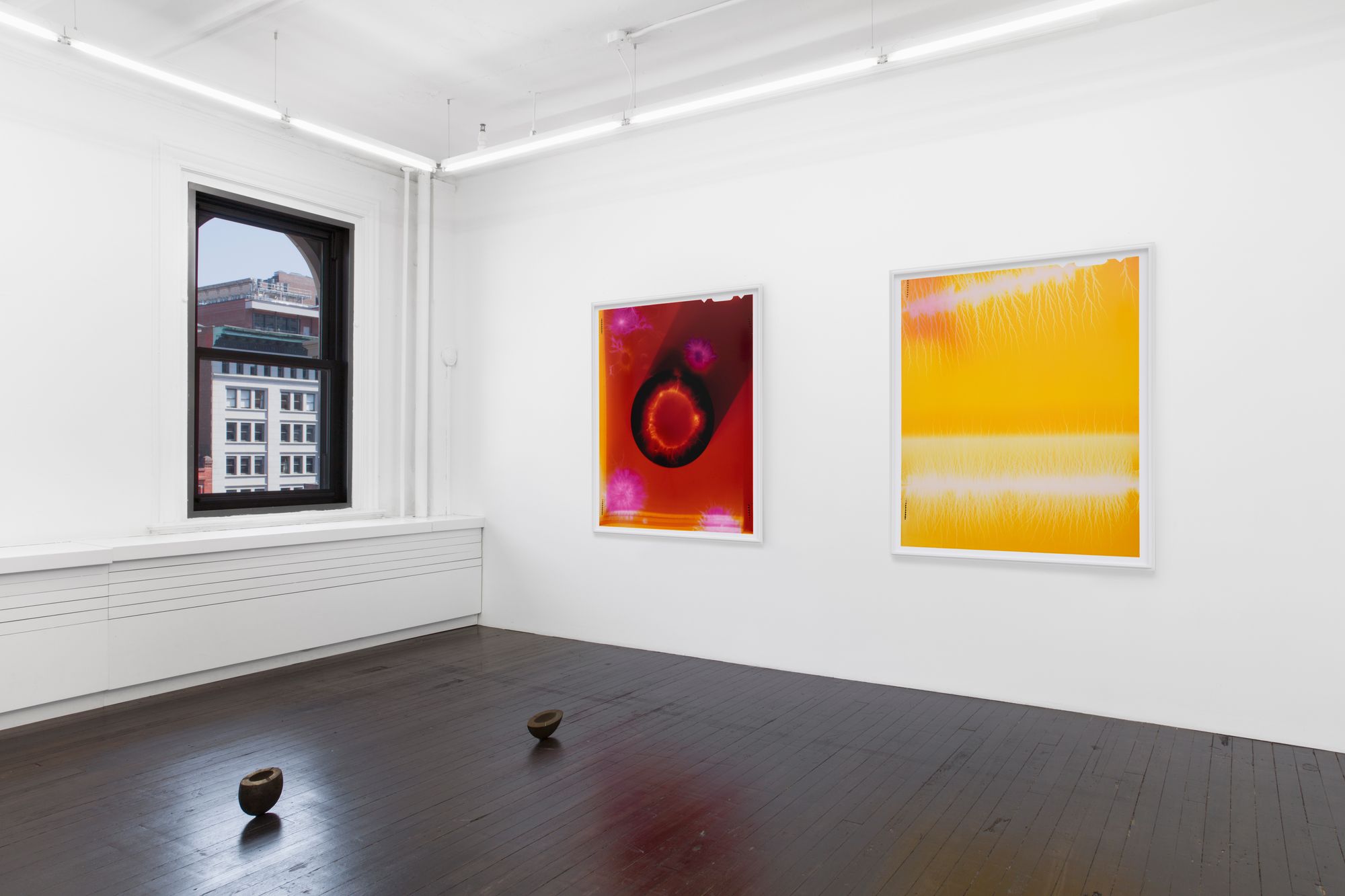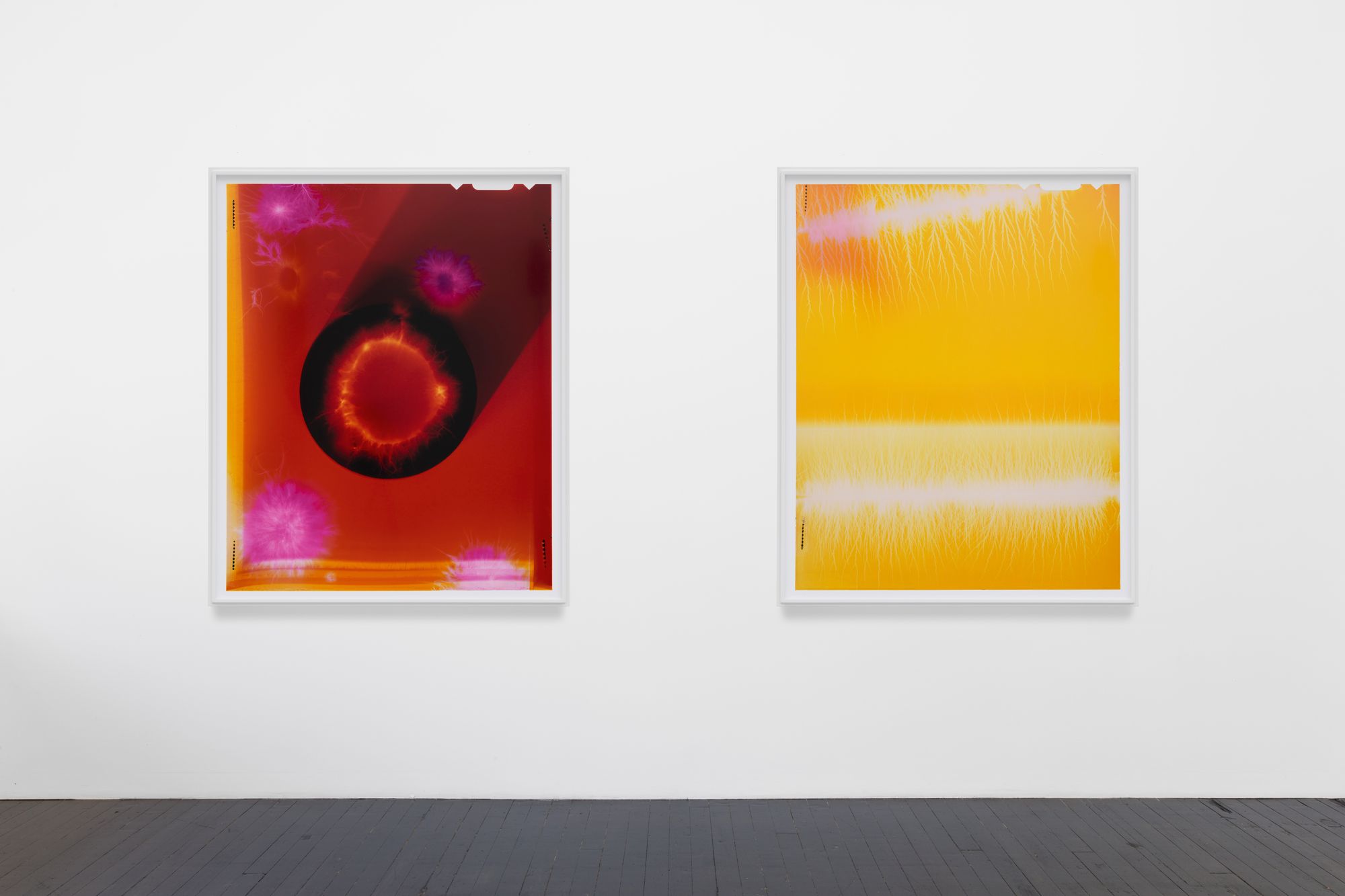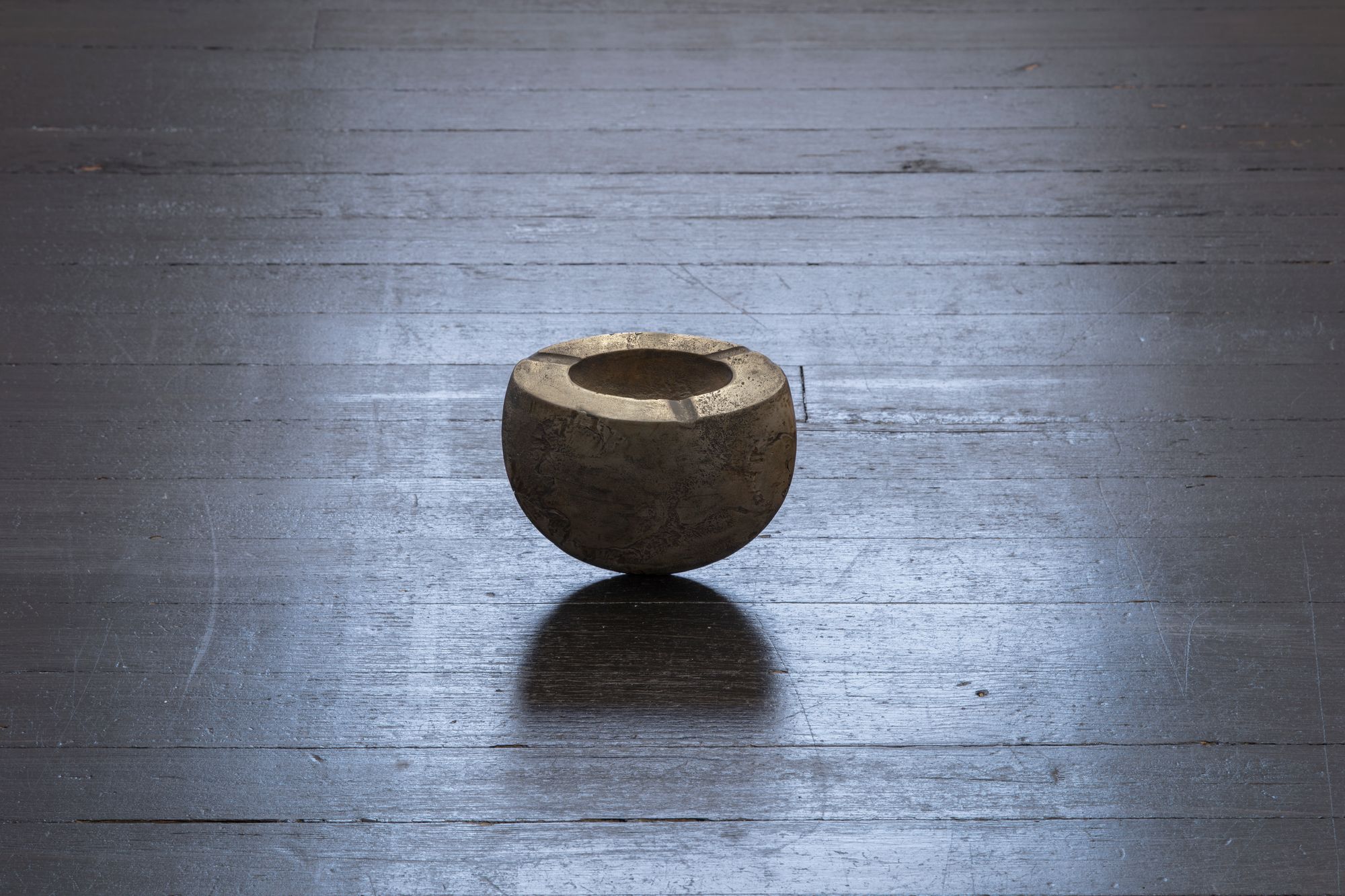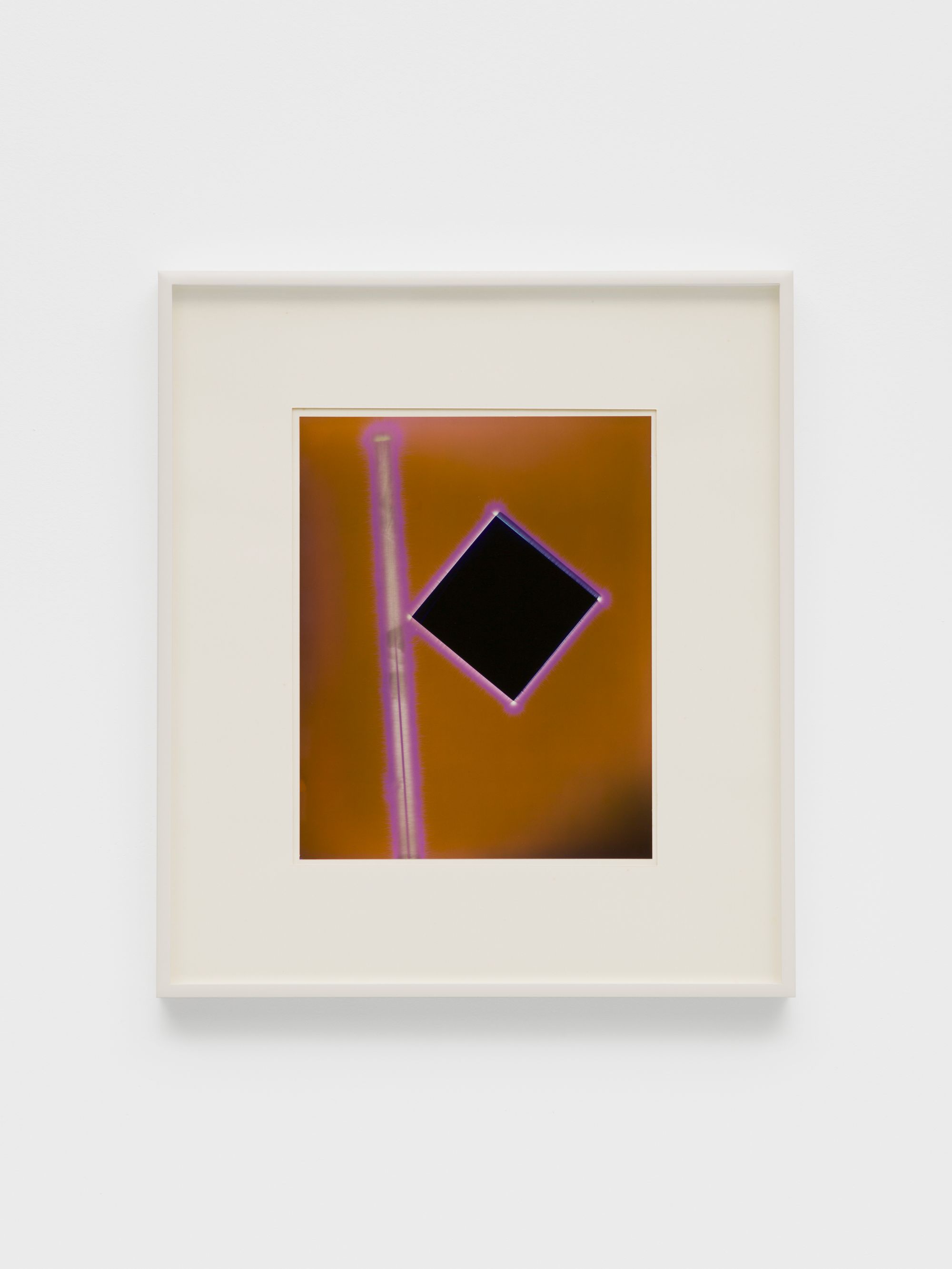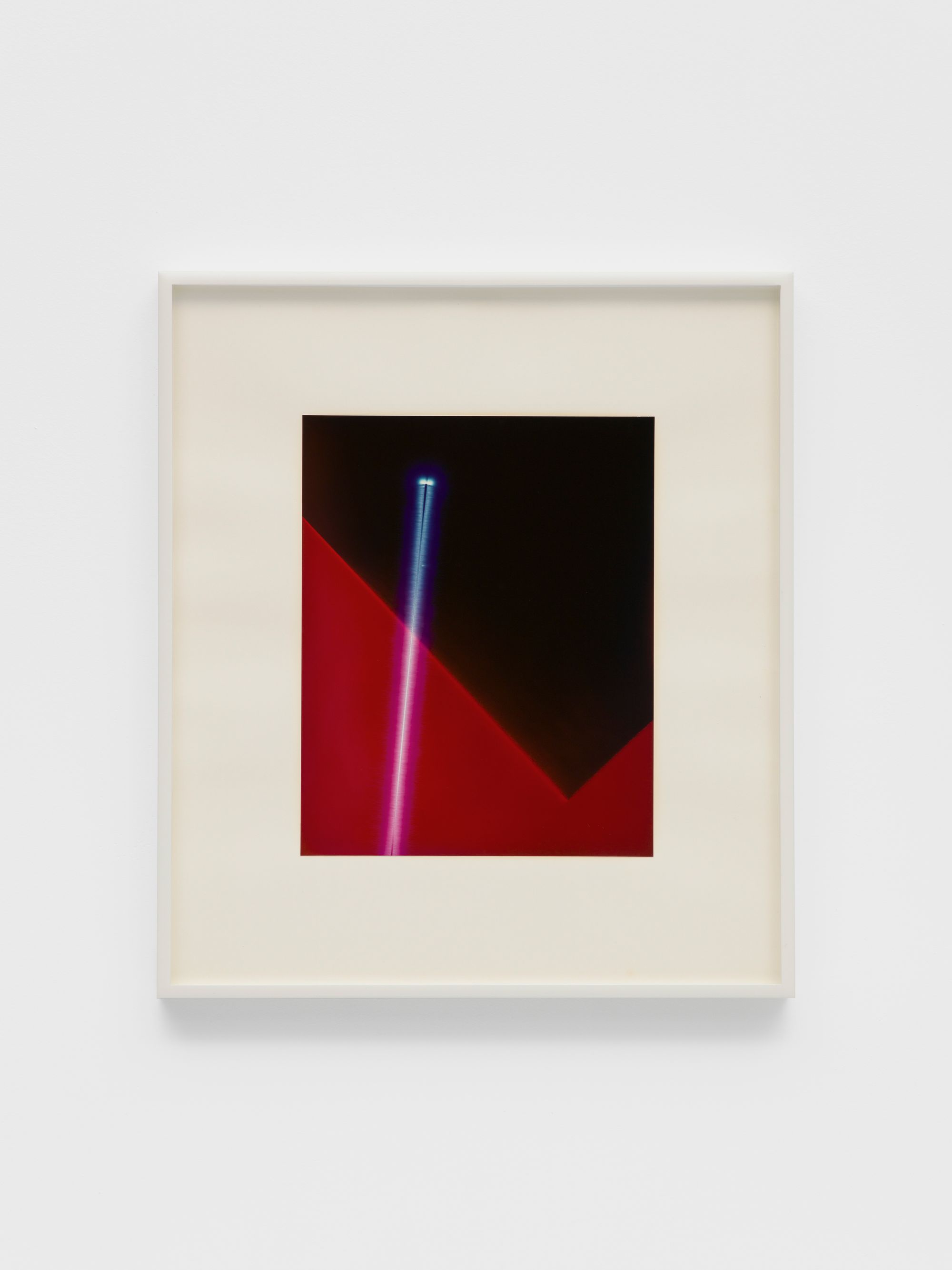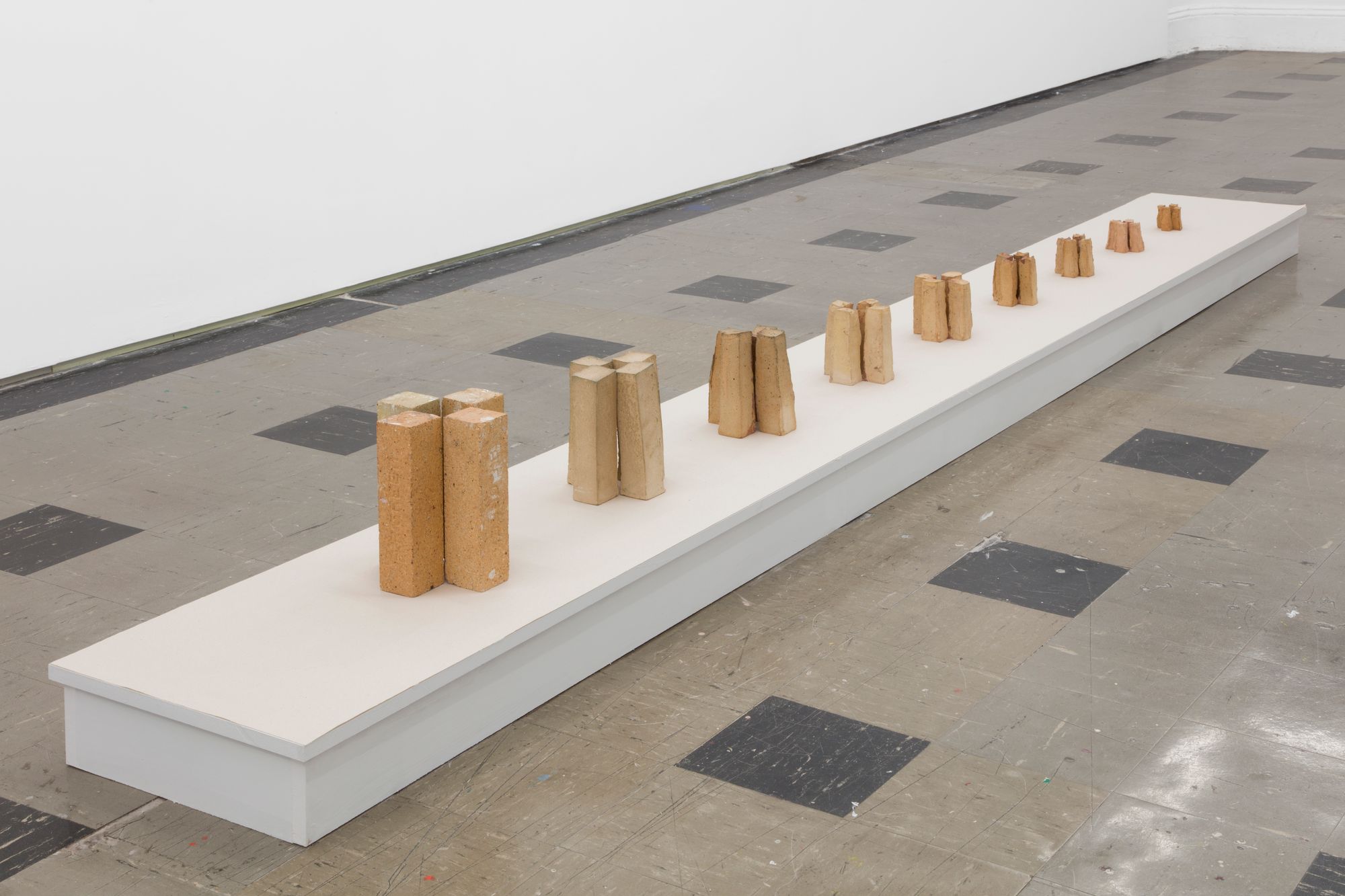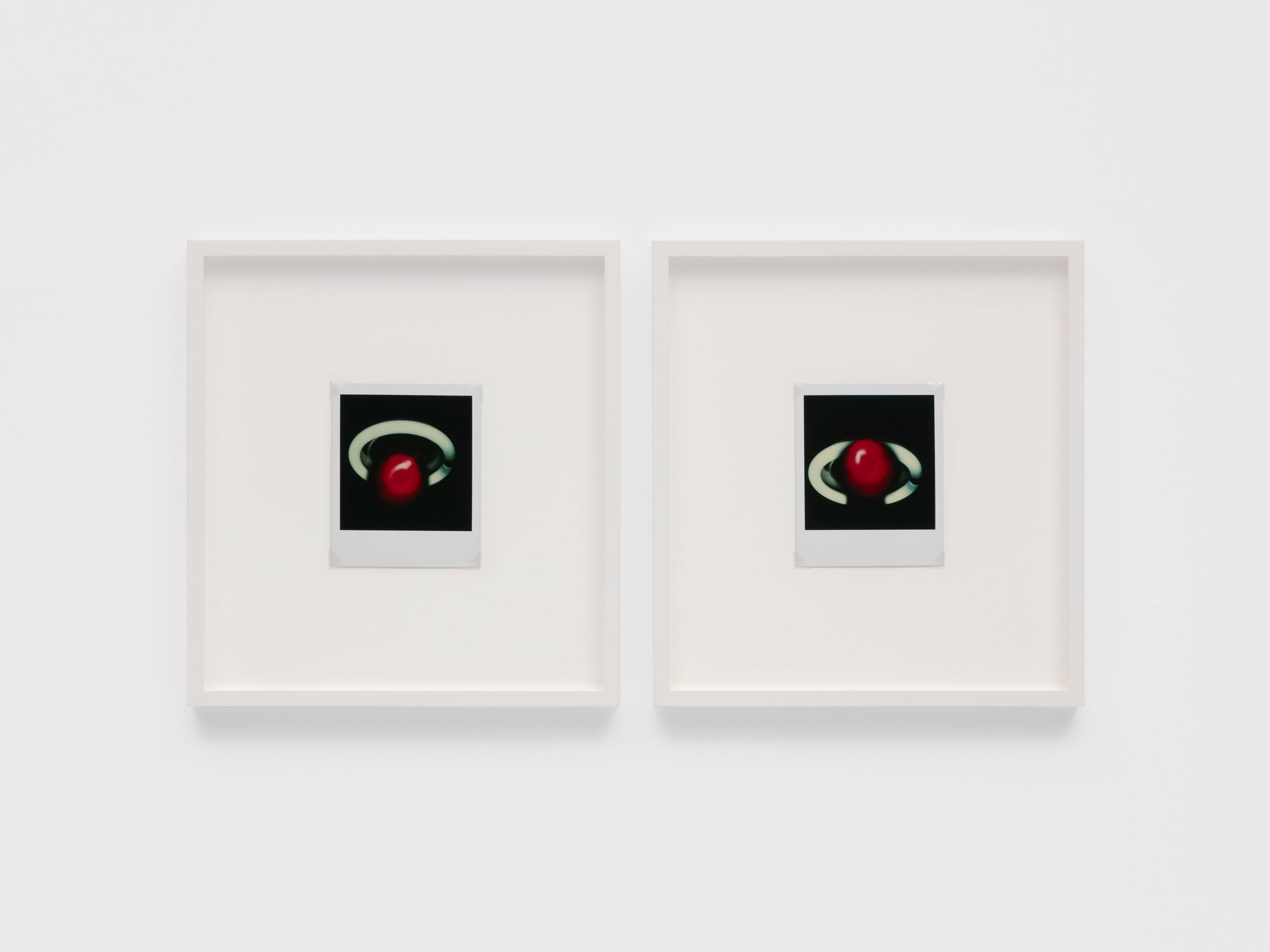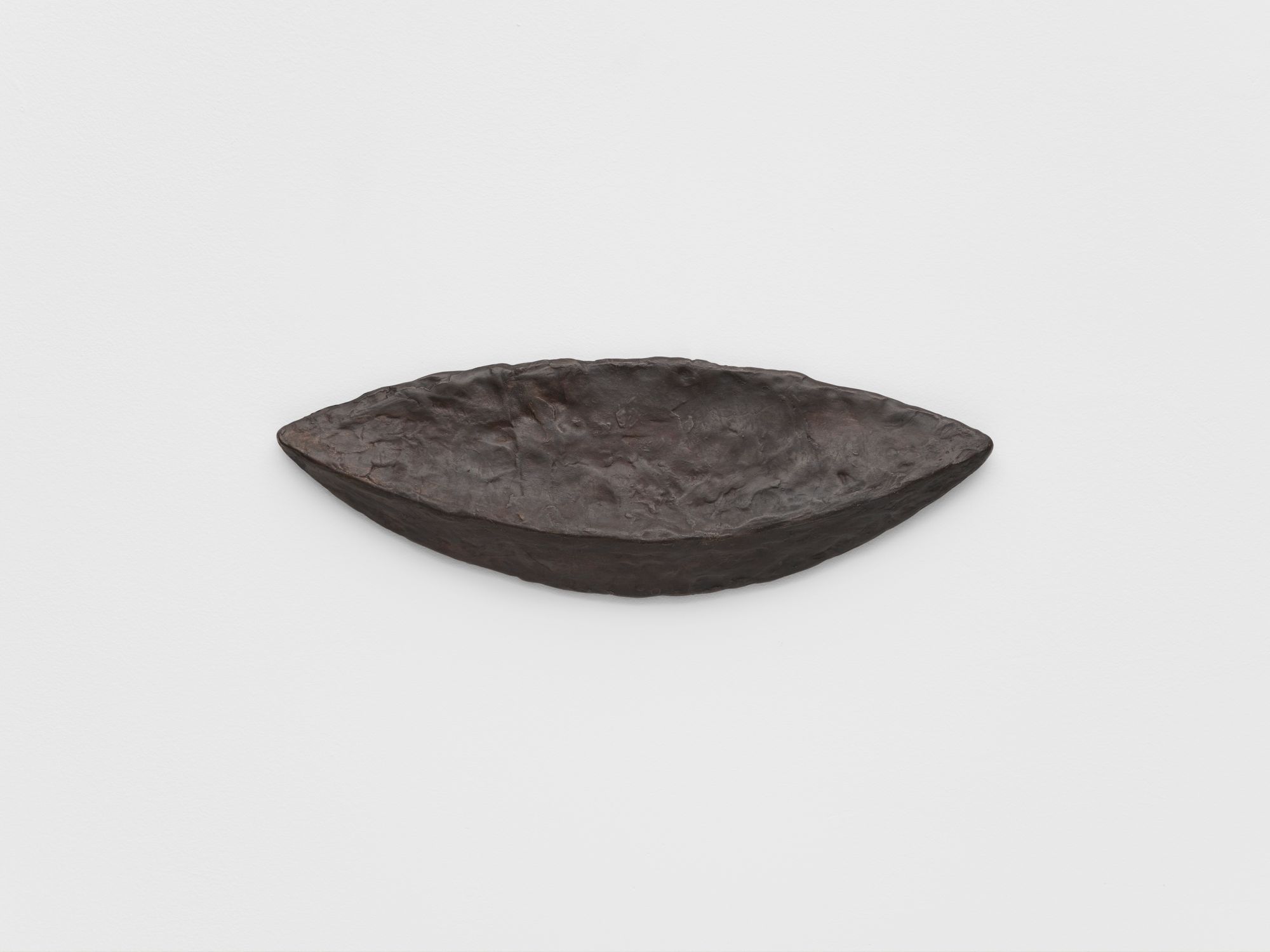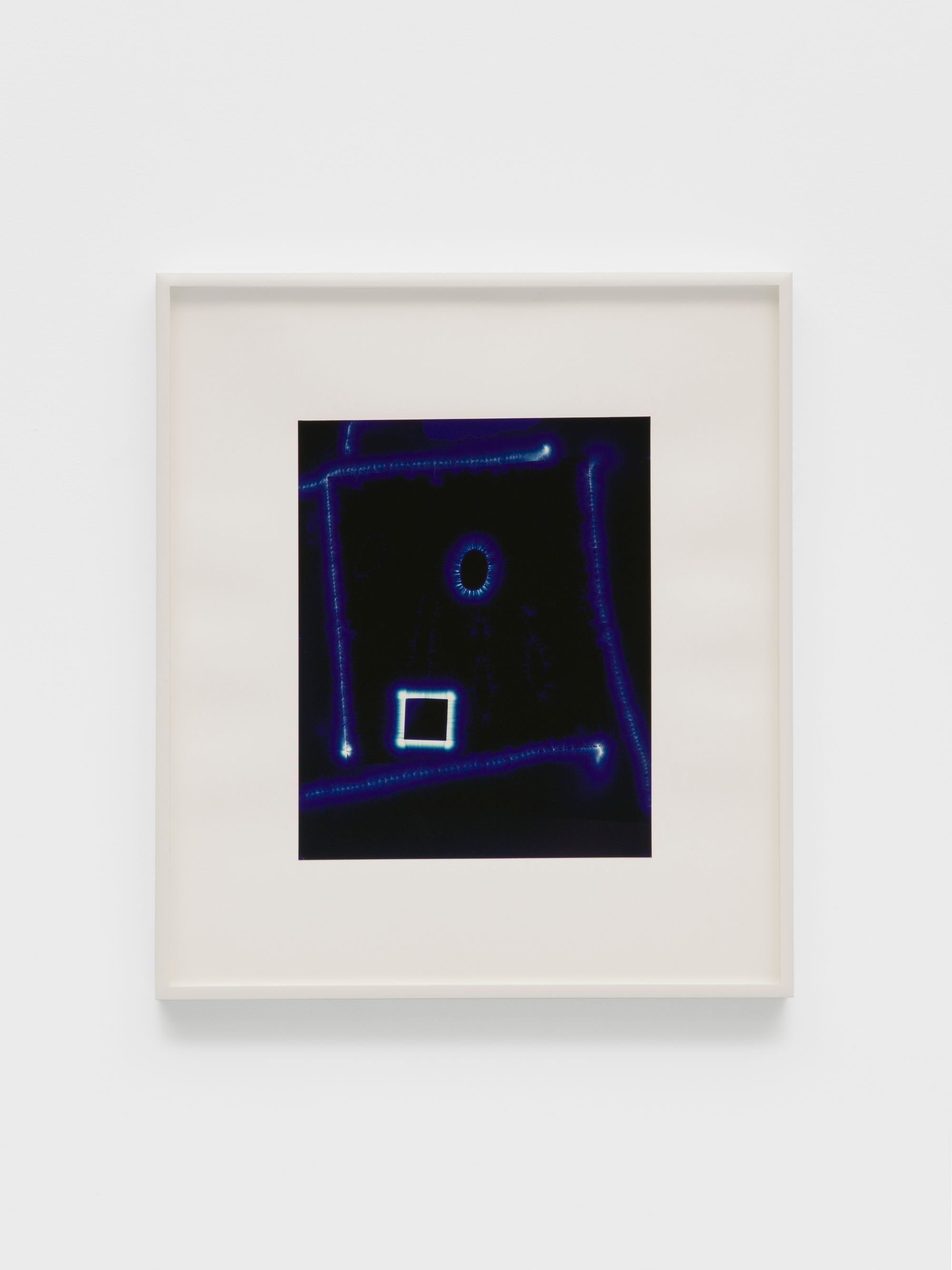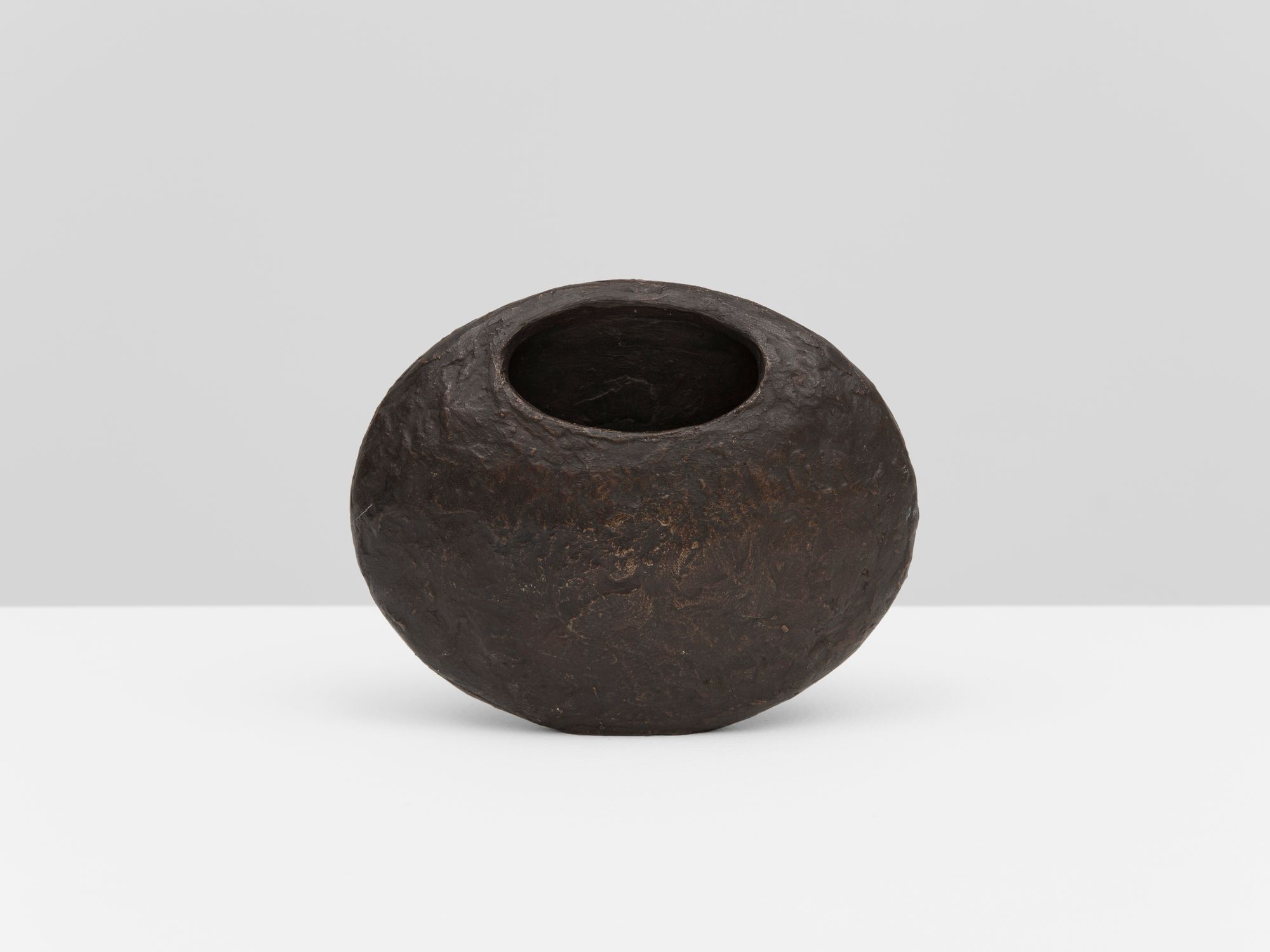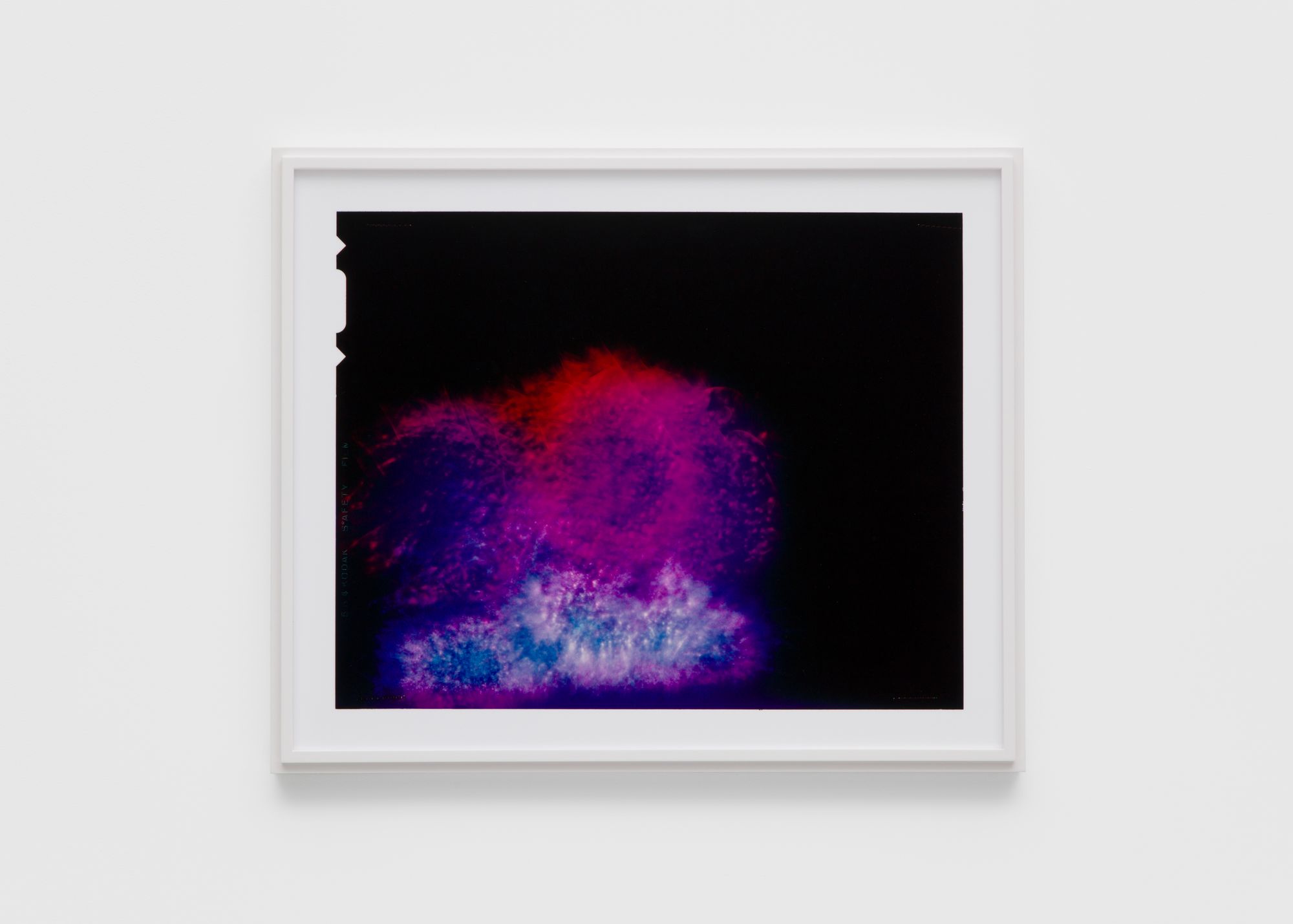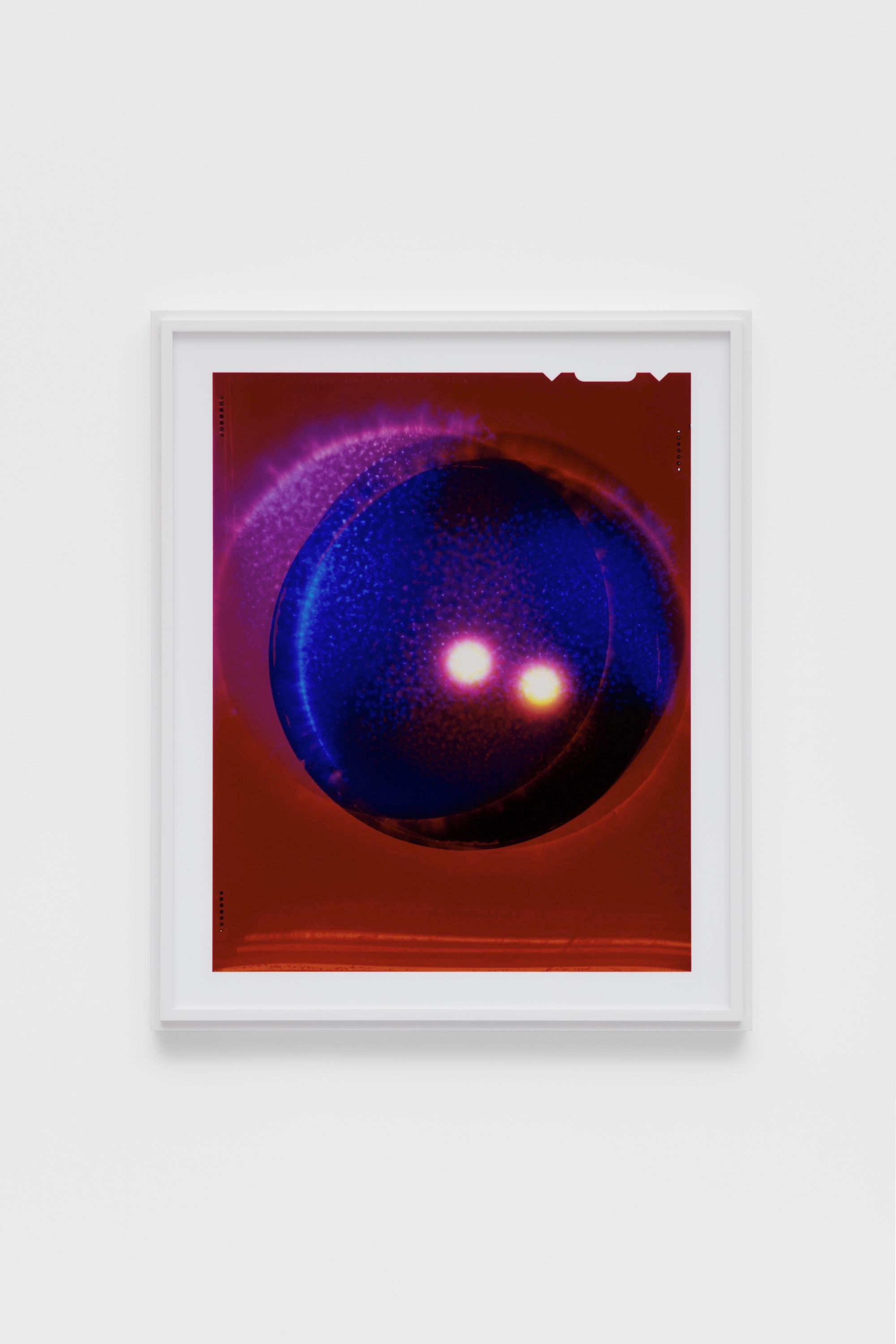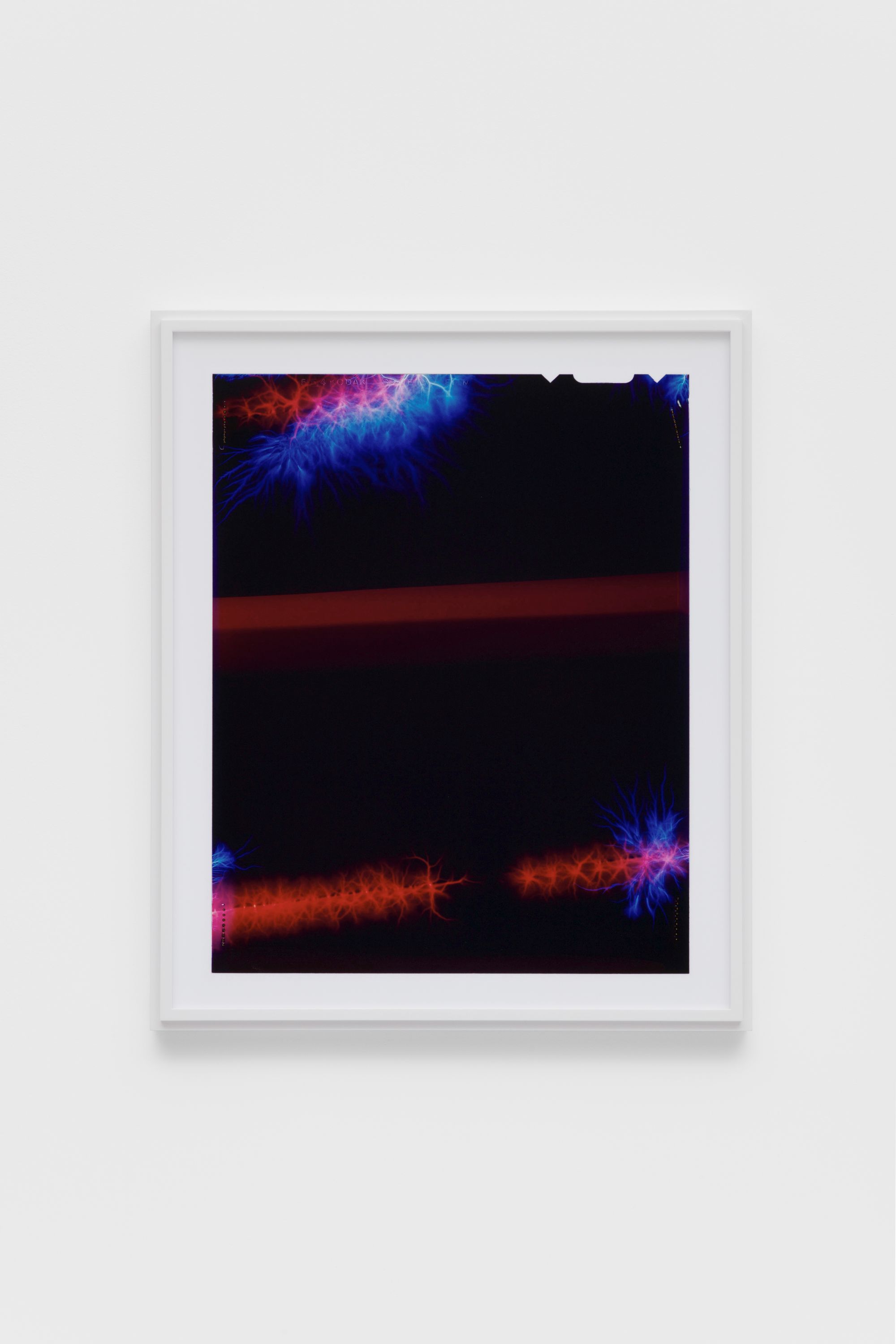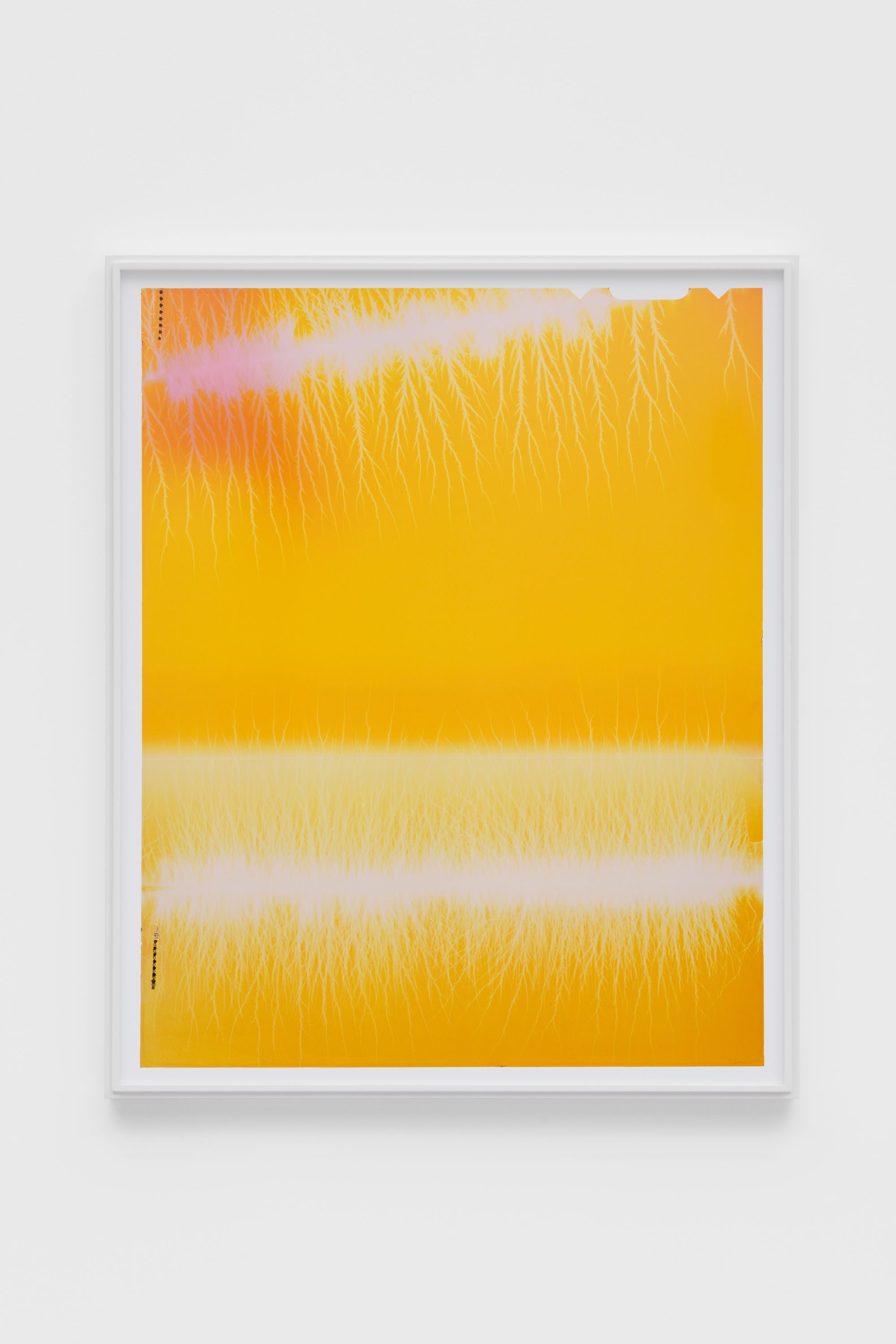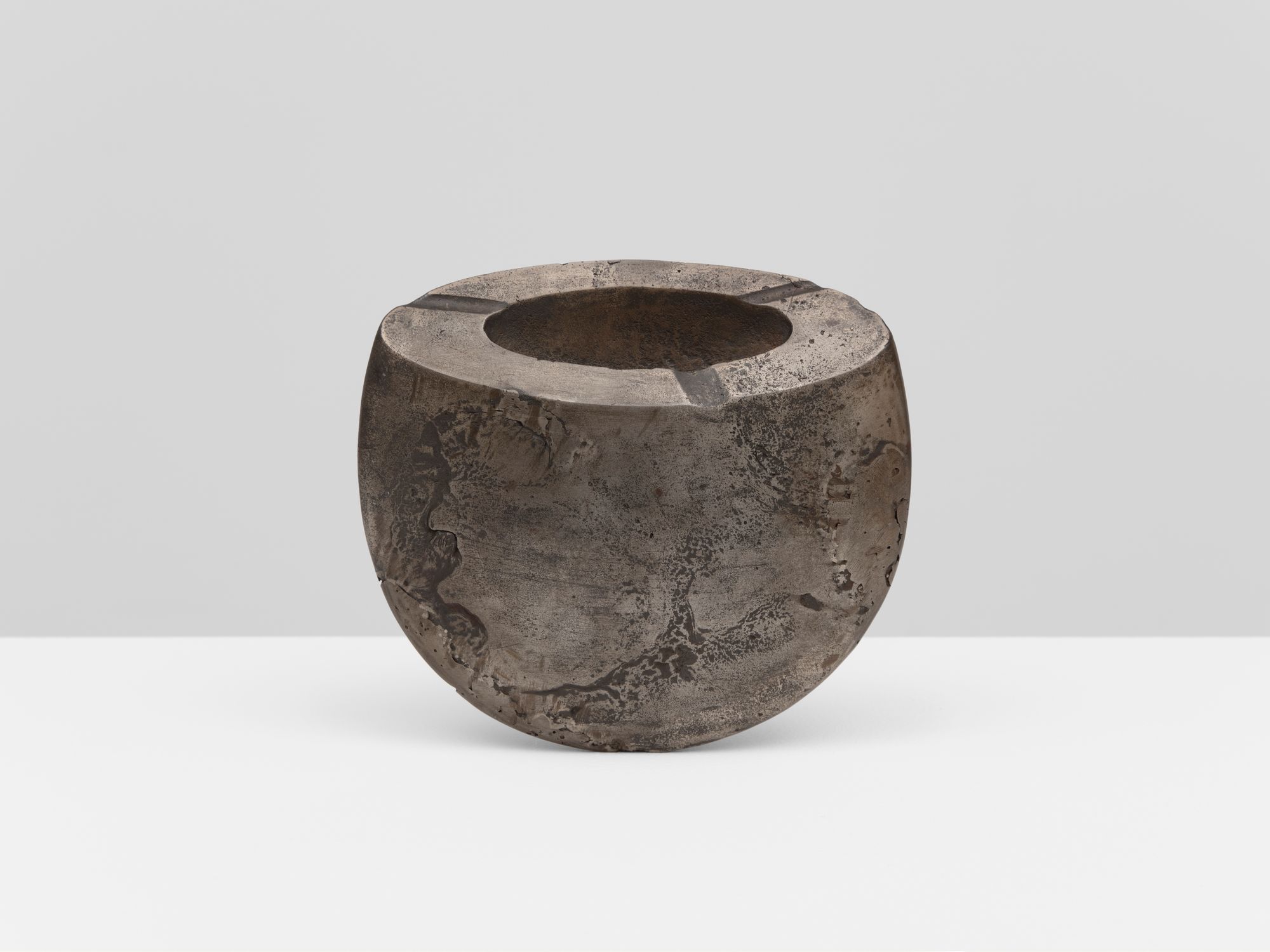
Past
Kerry Schuss
Sept. 9–Oct. 22, 2023
New York
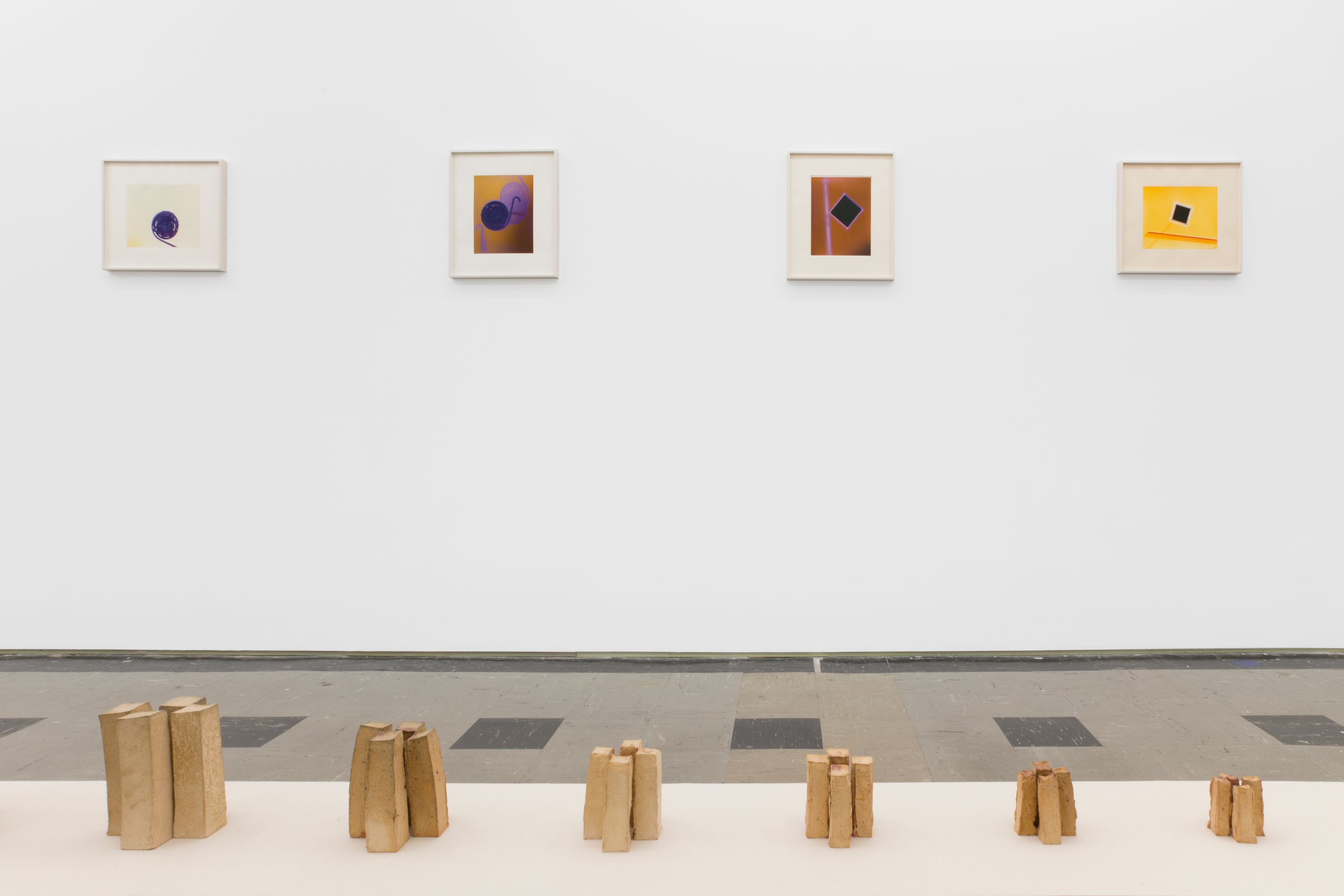
Gordon Robichaux is honored to present Kerry Schuss’s third exhibition at the gallery, and his largest to date. Installed across both of the gallery’s spaces, the show features new and historical works—photographs, sculptures, and paintings on paper—the earliest of which was created in 1974.
The larger gallery space (Suite 925) includes a selection of related artworks made between 1974 and 1983: three acrylic paintings on paper (1976); a series of eight unique Cibachrome Electrogram photos made in the artist’s darkroom using electricity, light, and colored gels (1978–80); a photographic diptych created on Valentine’s Day with a Polaroid camera, a flashlight with a red lens, and a circular florescent bulb (1978); and four small bronze sculptures cast by the artist, including two vessels displayed on pedestals and a pair of crescent-shaped wall works.
On the floor in the center of the room, Schuss’s multipart sculpture is displayed on a strip of rectangular unprimed canvas, similar to its original presentation at the Columbus Museum of Art in 1975. The work is comprised of thirty-six irregular rectangular forms organized as a progression of nine groups of four that decrease in size. The sculpture evinces the logic and process of its making: the artist cast the void between the four fire bricks with clay to create four new forms which he subsequently cast seven times.
In the gallery’s second space (Suite 907), Schuss has installed two small cast-iron sculptures (1989) on the floor to “activate and transform the floor into a pedestal.” The illusionistic, foreshortened forms are based on vintage ashtrays the artist has collected for many years.
On the walls, surrounding the sculptures, are a series of recent dye sublimation Electrogram prints (2023) made using 4x5 color transparencies Schuss first created in 1978. The images in these six photographs were realized using Kirlian photography, a technique that employs high-voltage current to directly expose film in the darkroom without the use of a camera. Schuss fashioned his own device with the aid of a Tesla coil to produce high-voltage, low-current electricity, which he applied to objects placed on the film.
Using a wire grounded to a radiator, Schuss touched metal objects (copper squares, magnets, and a small round mirror) resting on the film. The arcing current then traveled across the surface by way of the conductive metals in the film’s emulsion. During this process of electrifying the film, he also used colored lights to generate unpredictable effects: tracery that resembles lightning, geometric silhouettes burned into the film, and a spectrum of highly saturated color. These chance operations pushed the film’s capacity for color to its maximum and created visually complex, reflexive images that are at once bodily and otherworldly.
These dye sublimation prints are the result of a circuitous path Schuss couldn’t have anticipated or realized in 1978. From 1976 to 1981, while living in a loft two blocks away from Gordon Robichaux, above Max’s Kansas City on Park Avenue South, Schuss made hundreds of prints, negatives, and transparencies, all of which he kept in storage for thirty-five years. He continued to work seriously as an artist, creating work in various mediums until 1998, when he opened his gallery. “The gallery became my main creative outlet; without intending it, I took a twenty-year hiatus from making my own work.”
Inspired by his friend and peer Mitchell Algus, who organized an exhibition of 1970s conceptual photography in 2016, Schuss returned to his stored negatives and transparencies and discovered the strength and possibility of the work he had begun four decades ago. Reprising these, for the past six years, Schuss has used digital technology to enlarge the 1978 color transparencies and print these new images directly onto aluminum using a dye sublimation process. The six new prints on view evidence the continued, generative possibilities of a project Schuss started as a young artist.
Reflecting on his early work, Schuss writes,
In 1976, when I was 24 years old, I moved from Columbus, Ohio, to New York City to become an artist. At that time, I was making abstract paintings influenced by Mondrian, Malevich, Rothko, and tantric art, all of which I had only seen reproduced in books. I had read that Mondrian was involved with Theosophy and I got a hold of the book Thought-Forms [1905] by Annie Besant and C.W. Leadbeater of the Theosophical Society. Having been a good hippie, it was in this intersection of reductive abstraction and spiritual quest that I found subject matter to explore.
In New York I visited museums and galleries, and for the first time I got to see great art in person. This was thrilling, but also overwhelming. Trying to paint in New York proved to be difficult for me because my mind was filled with other artists’ imageries. Around this time, I bought a Polaroid SX-70 and started experimenting freely by making abstract photographs. I played around using colored lights and reflections off plastic to make instant, painterly effects in the camera’s small square format. In the magical chance capabilities of the SX-70, I found the open space to create my art.
Install (20)

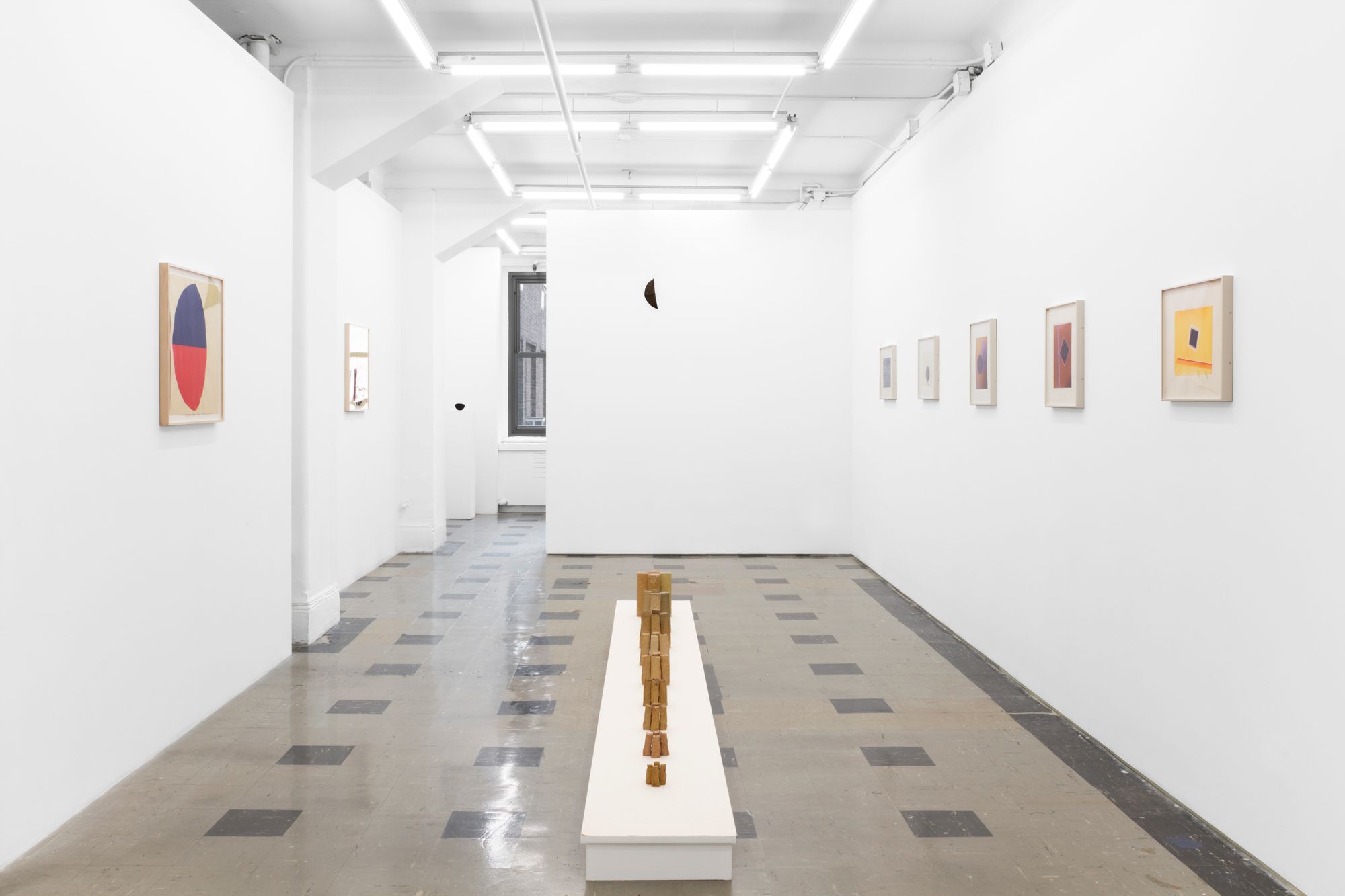

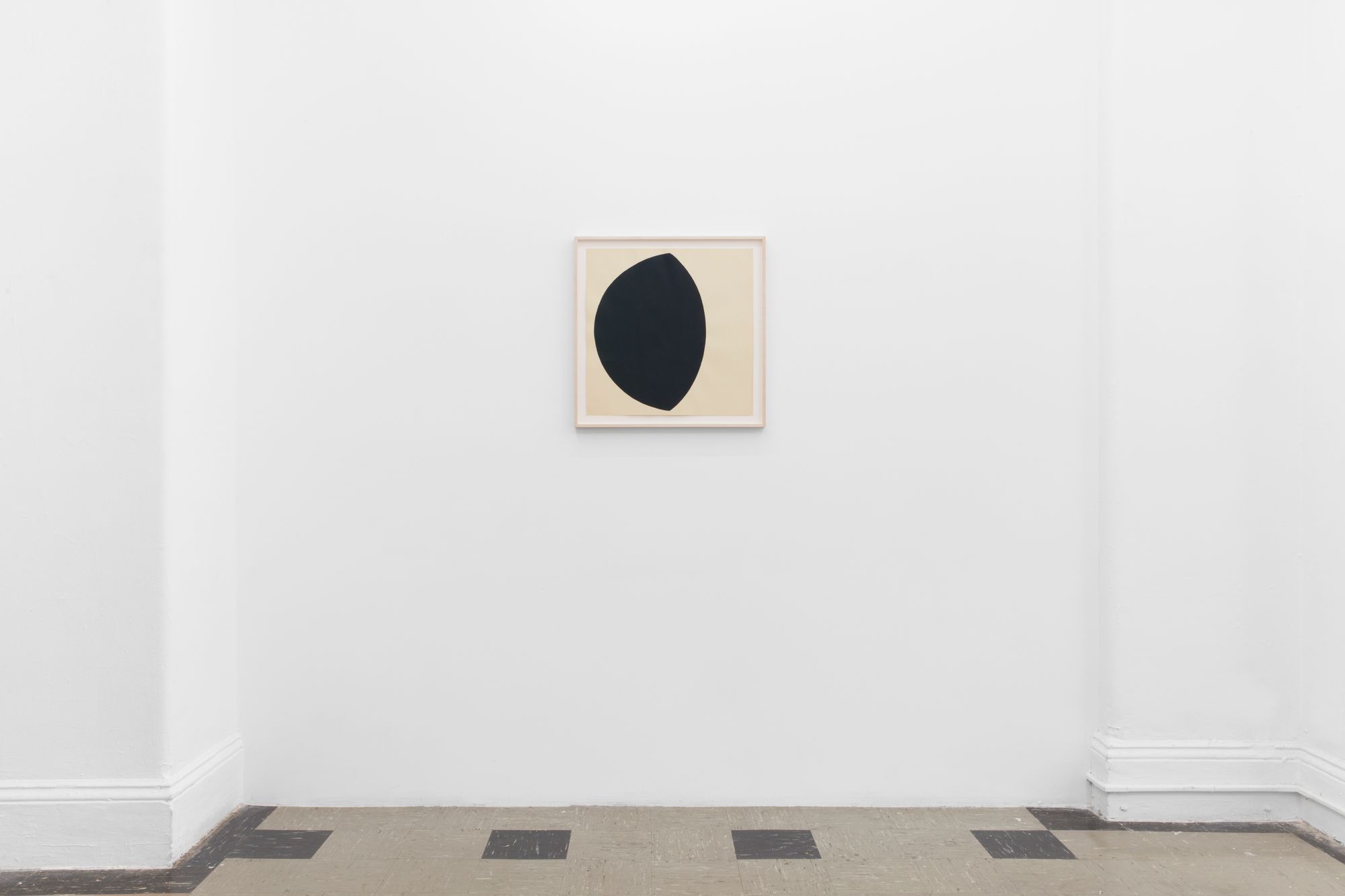
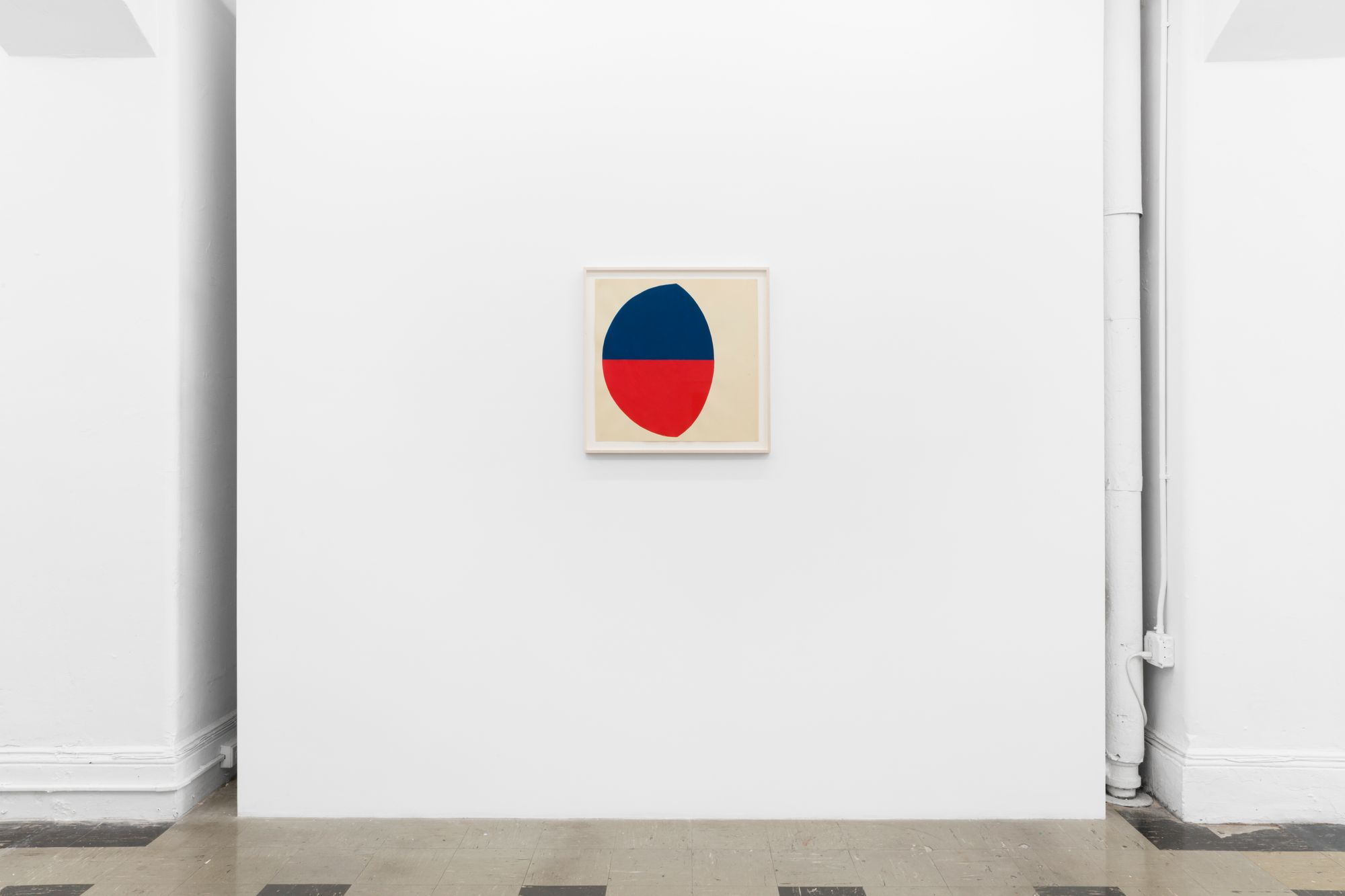
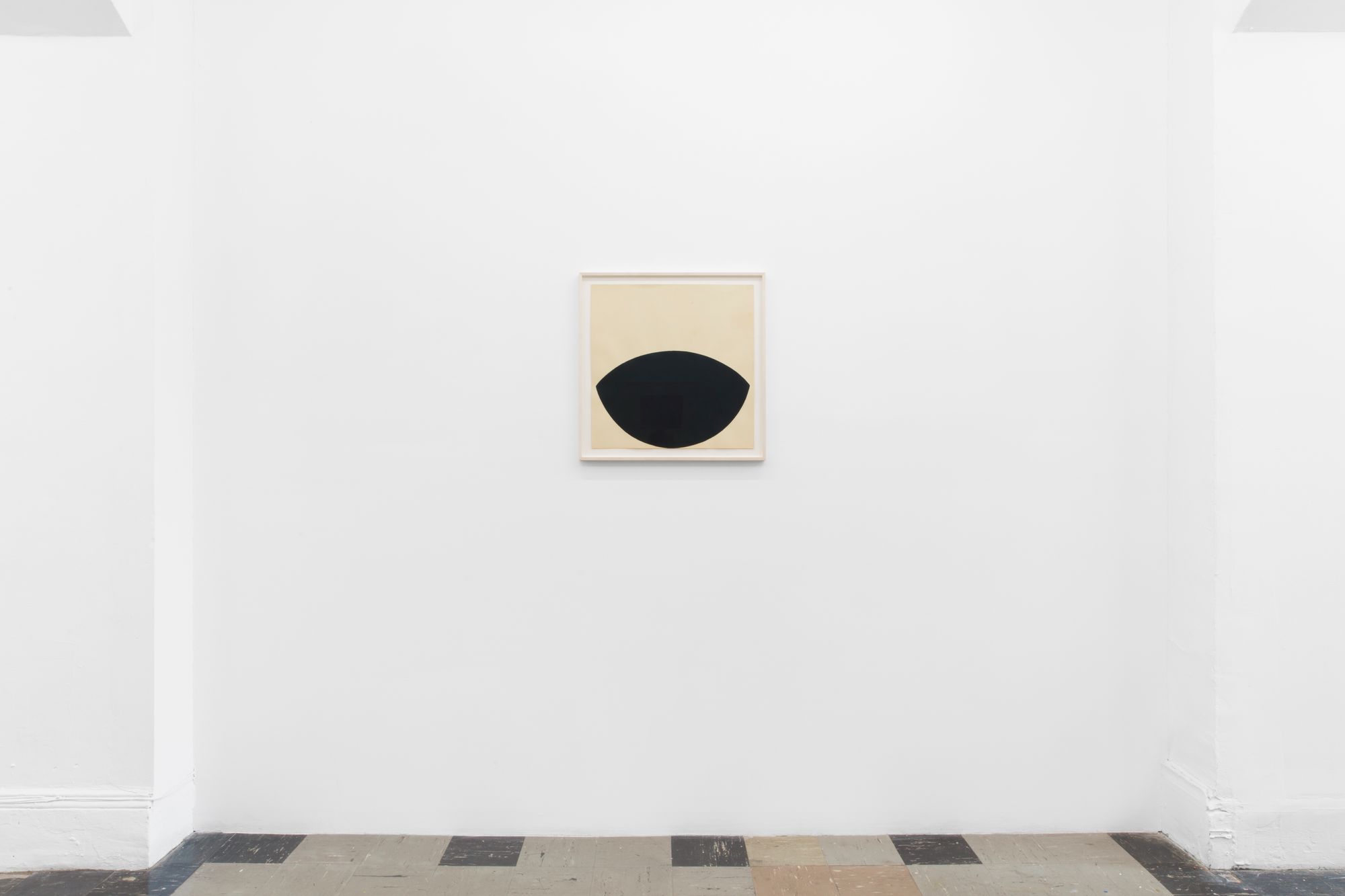
Works
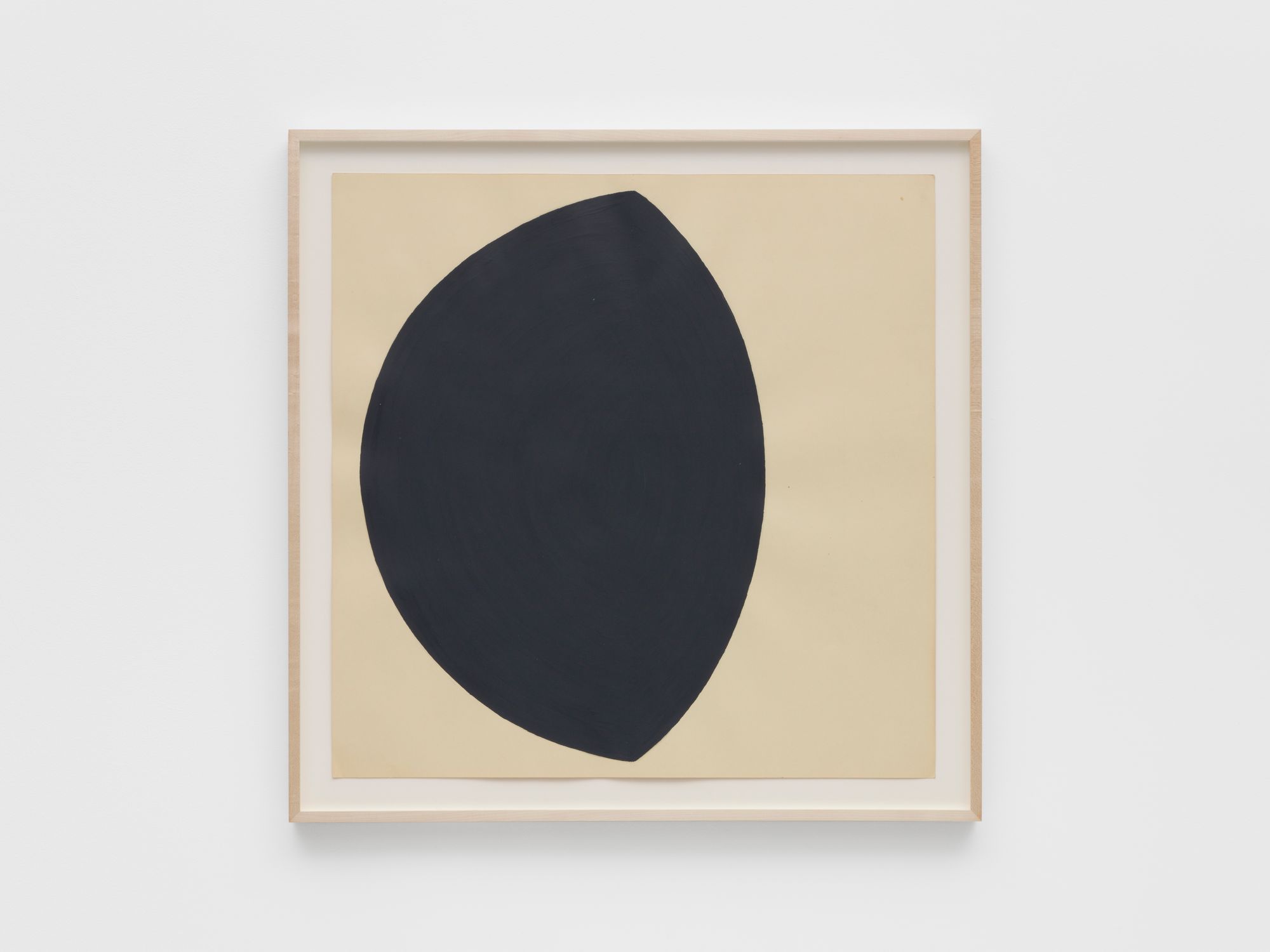
Untitled (Moon)
Acrylic on paper
20 x 20 inches
1976
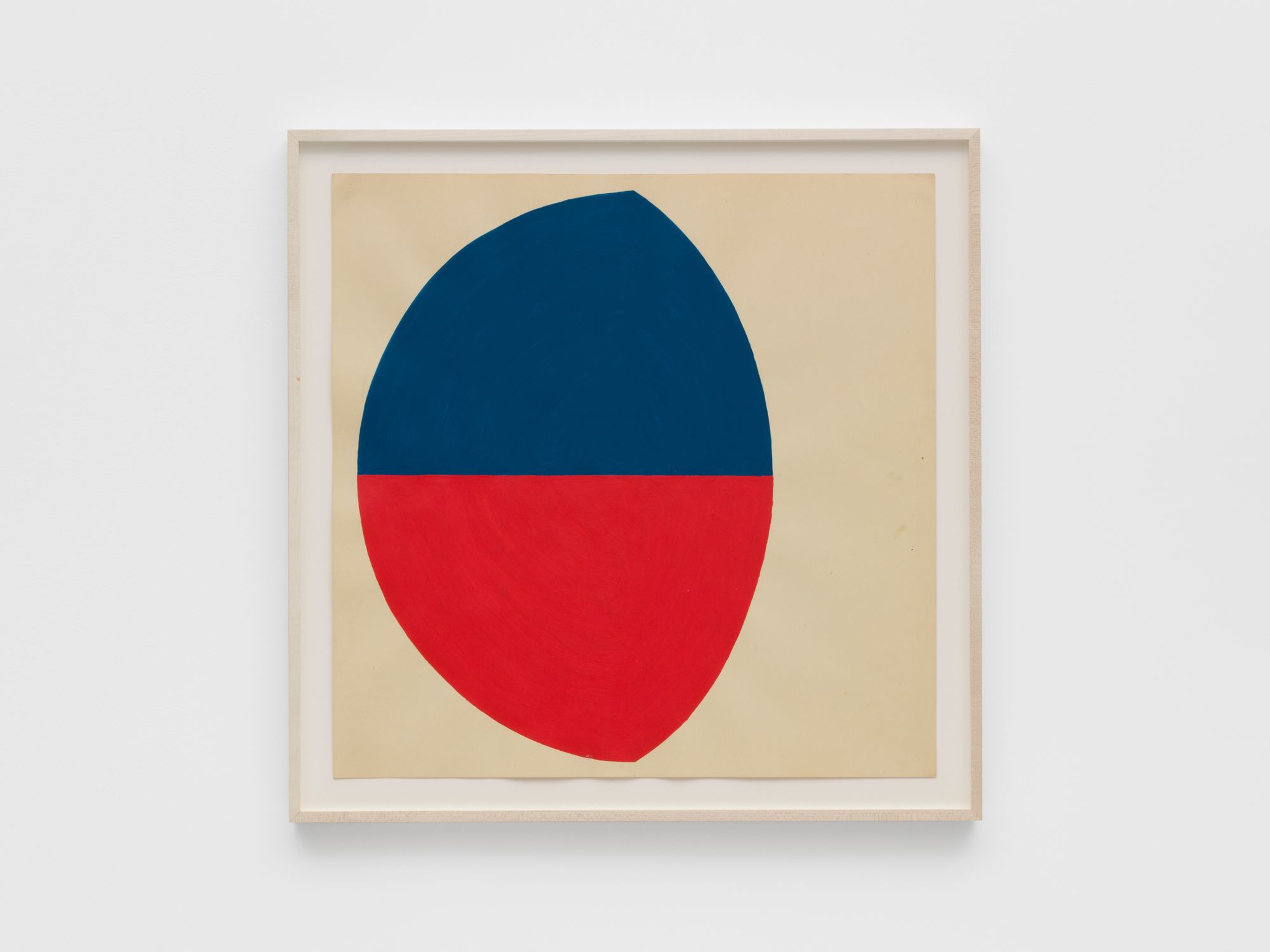
Untitled (Circumstance)
Acrylic on paper
1976
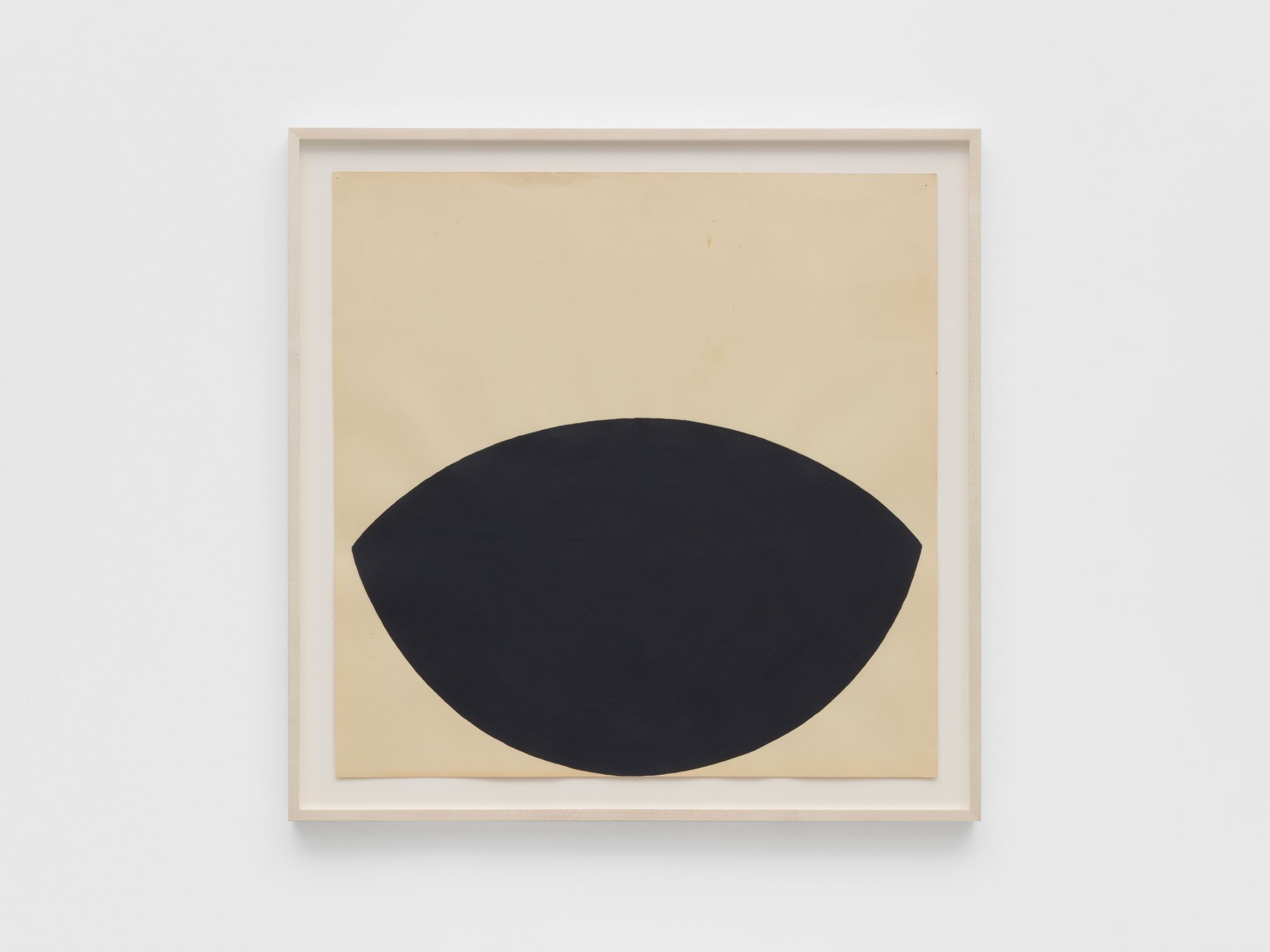
Untitled (Bowl)
Acrylic on paper
20 x 20 inches
1976
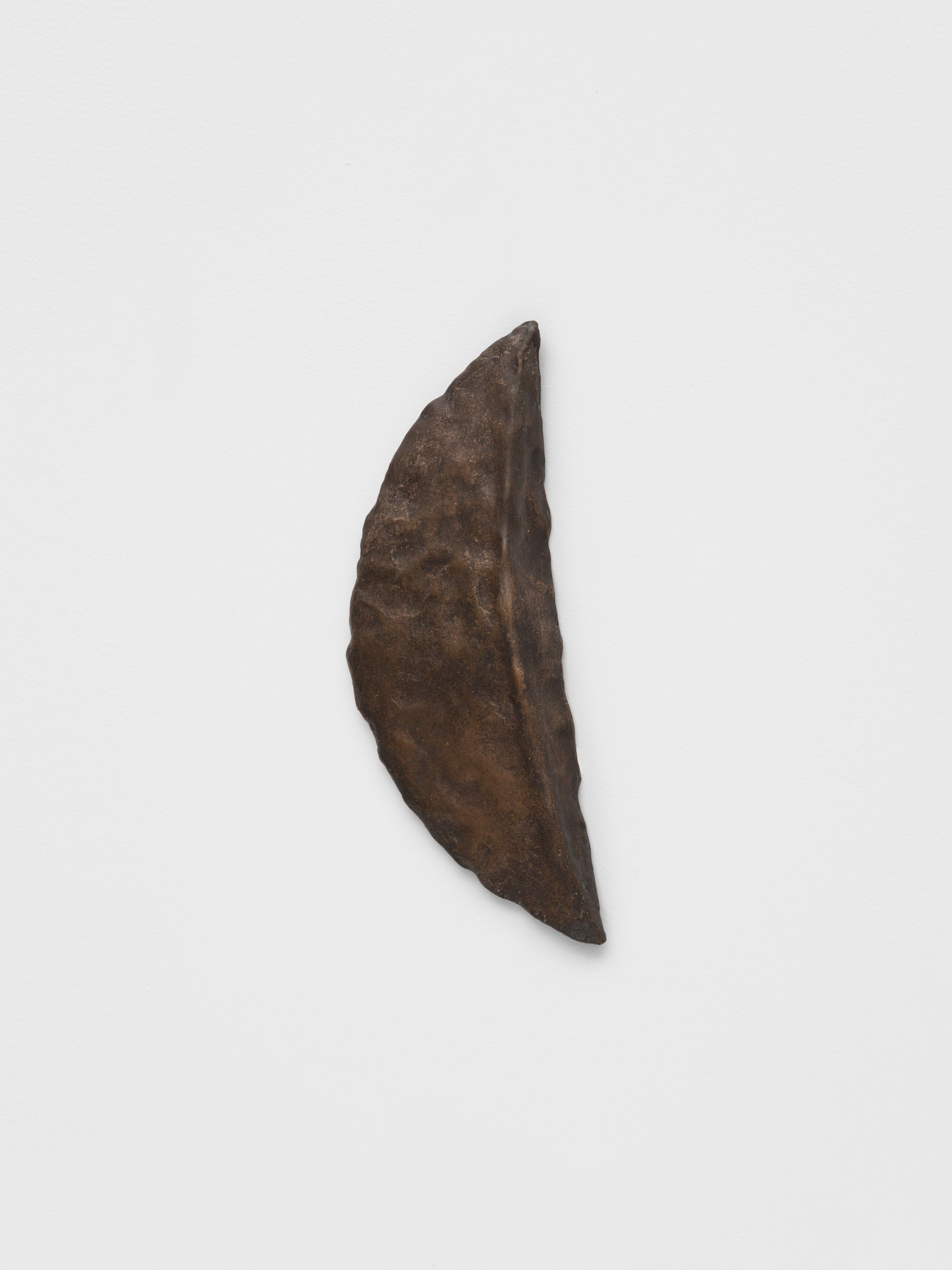
Moon
Bronze
9.75 x 3.75 x 1.125 inches
1983

Star (Electrogram)
Cibachrome (unique)
8 x 10 inches
1979
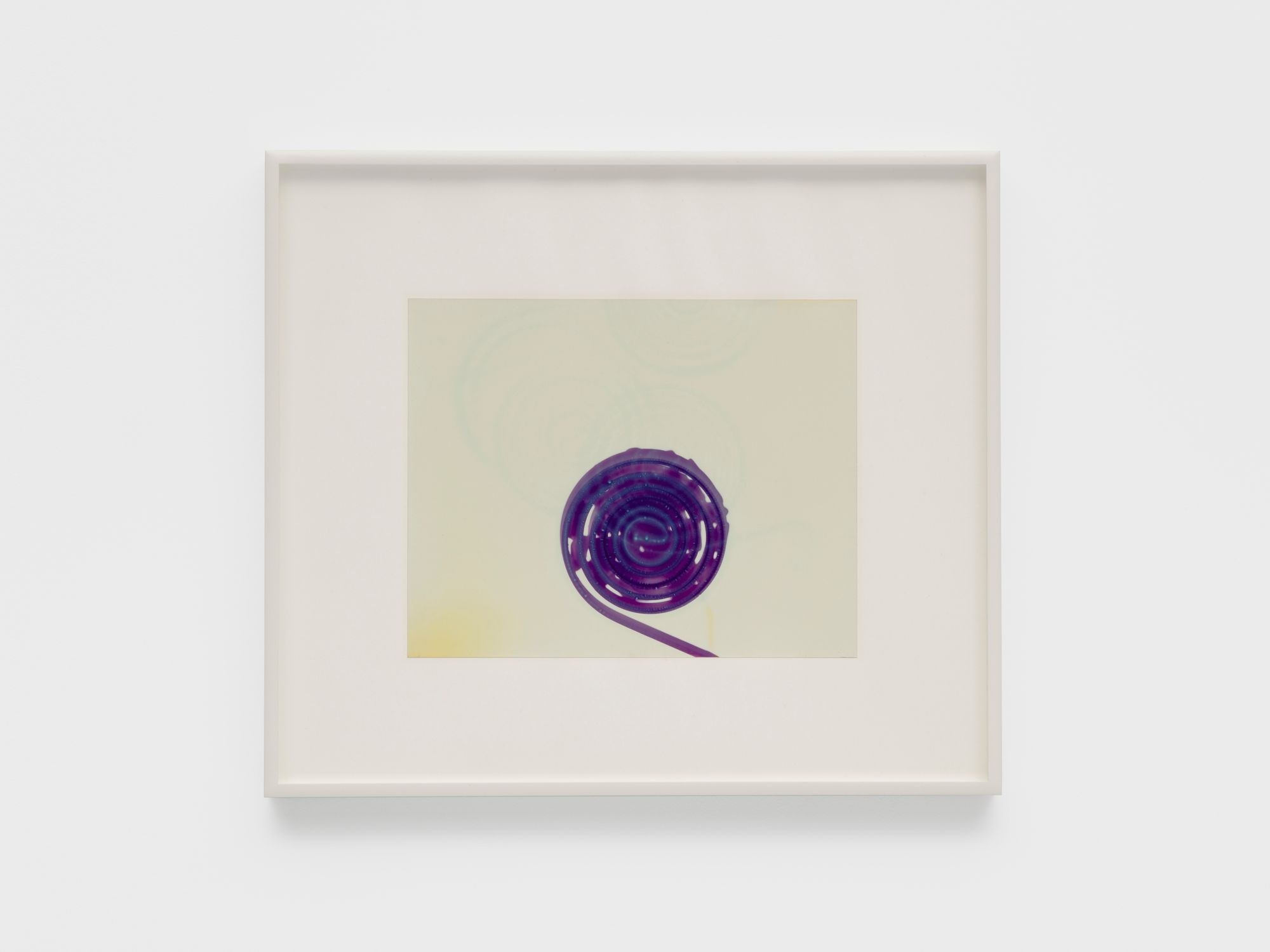
Untitled (Electrogram)
Cibachrome (unique)
8 x 10 inches
